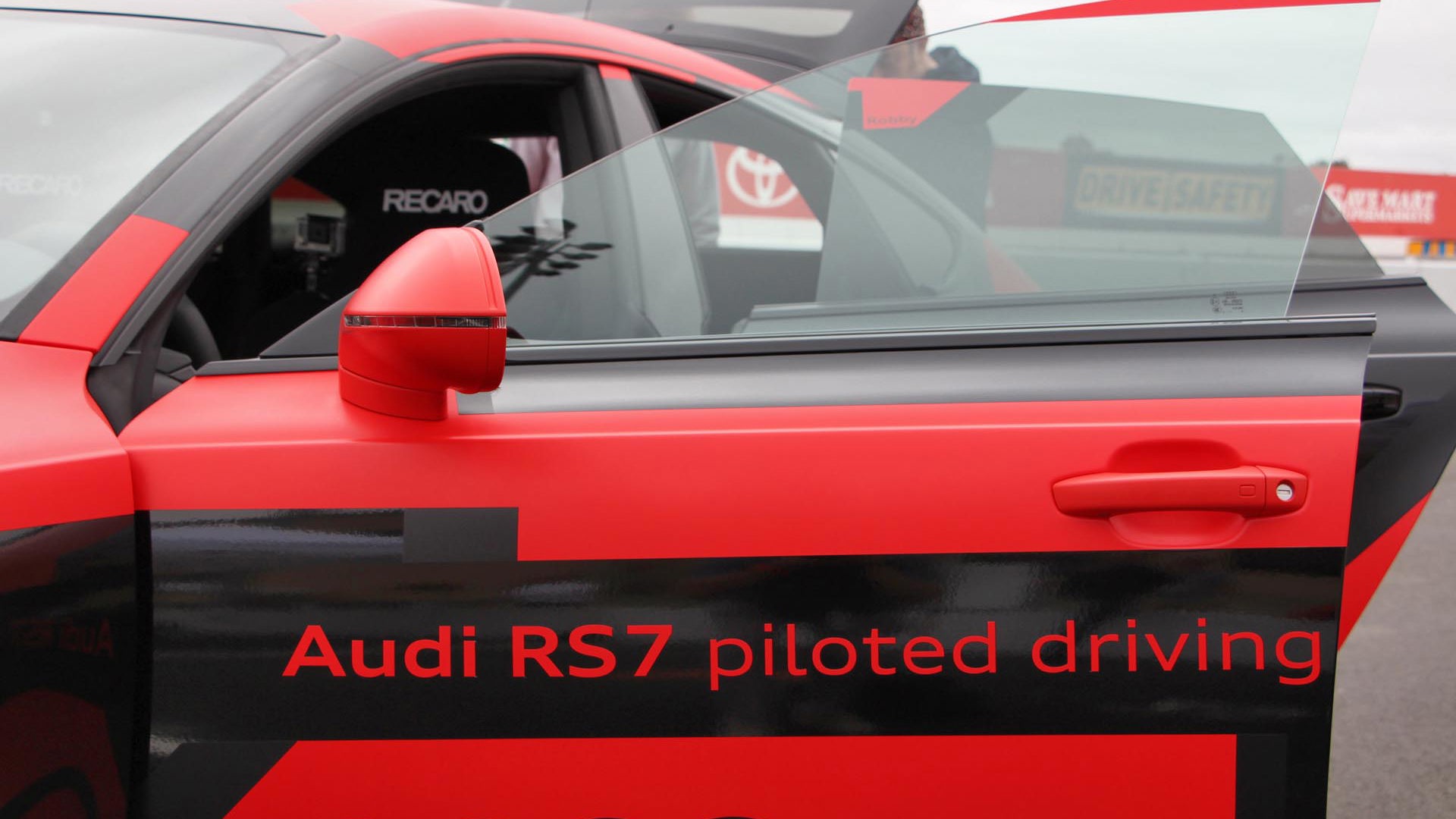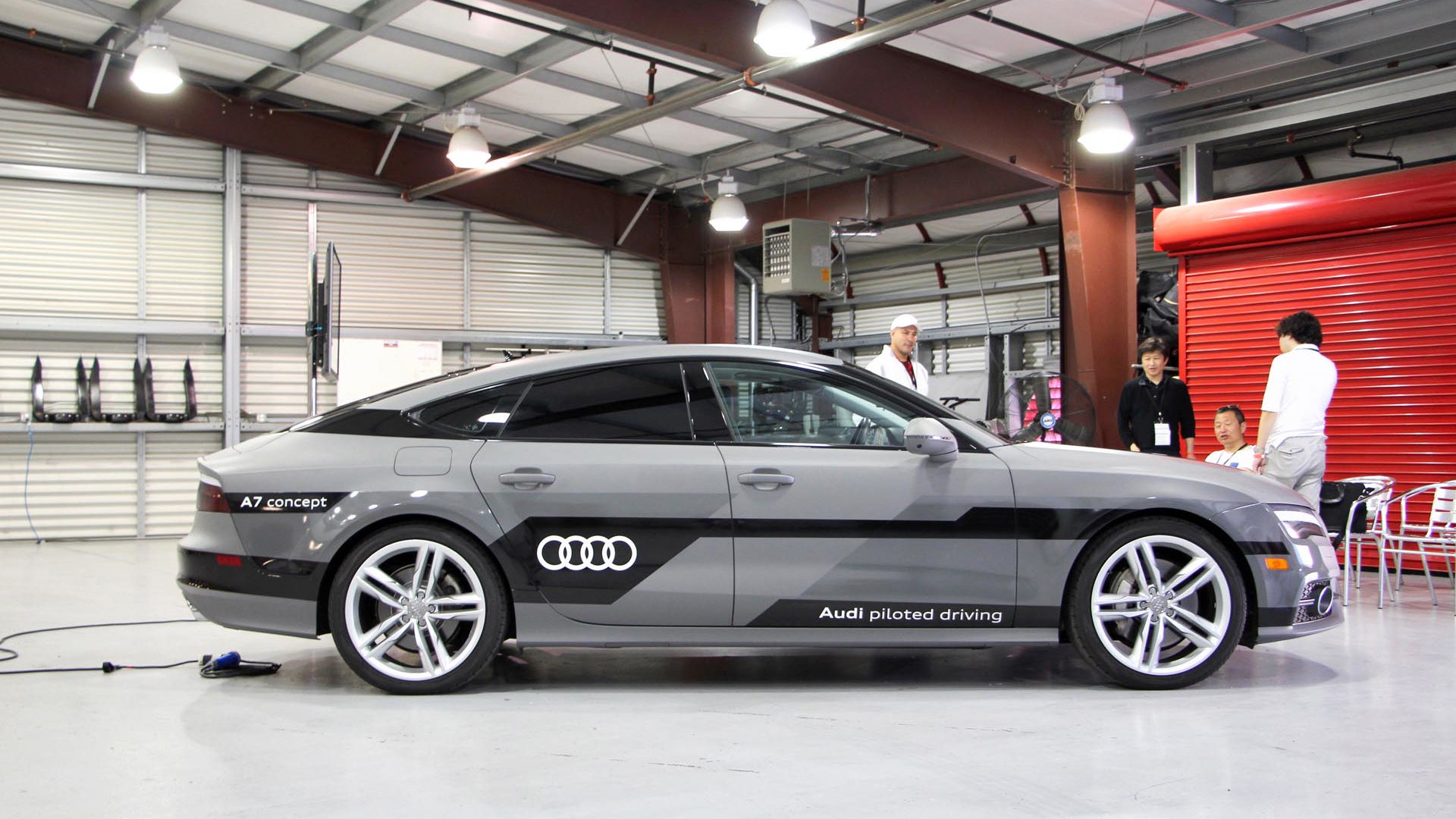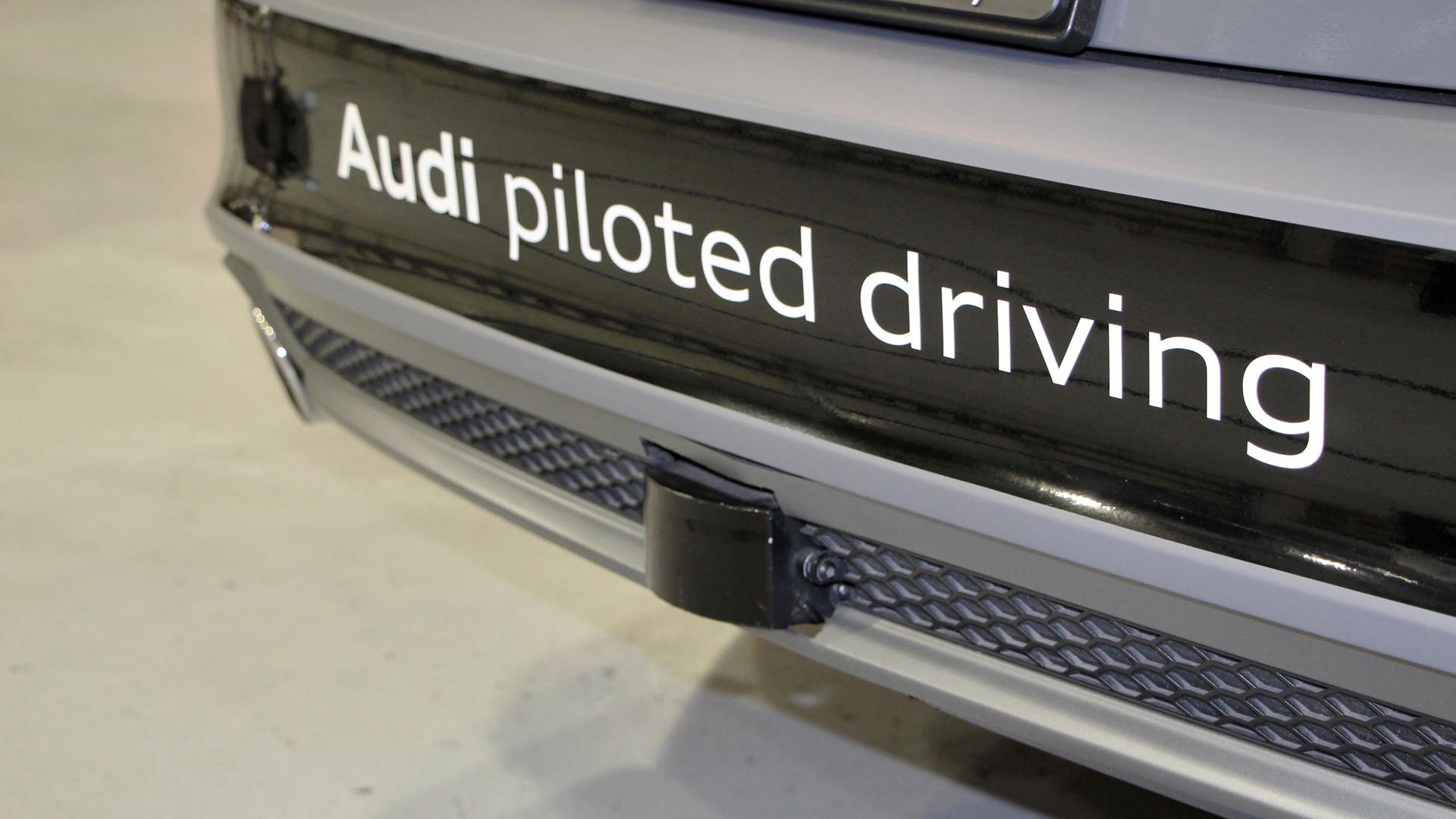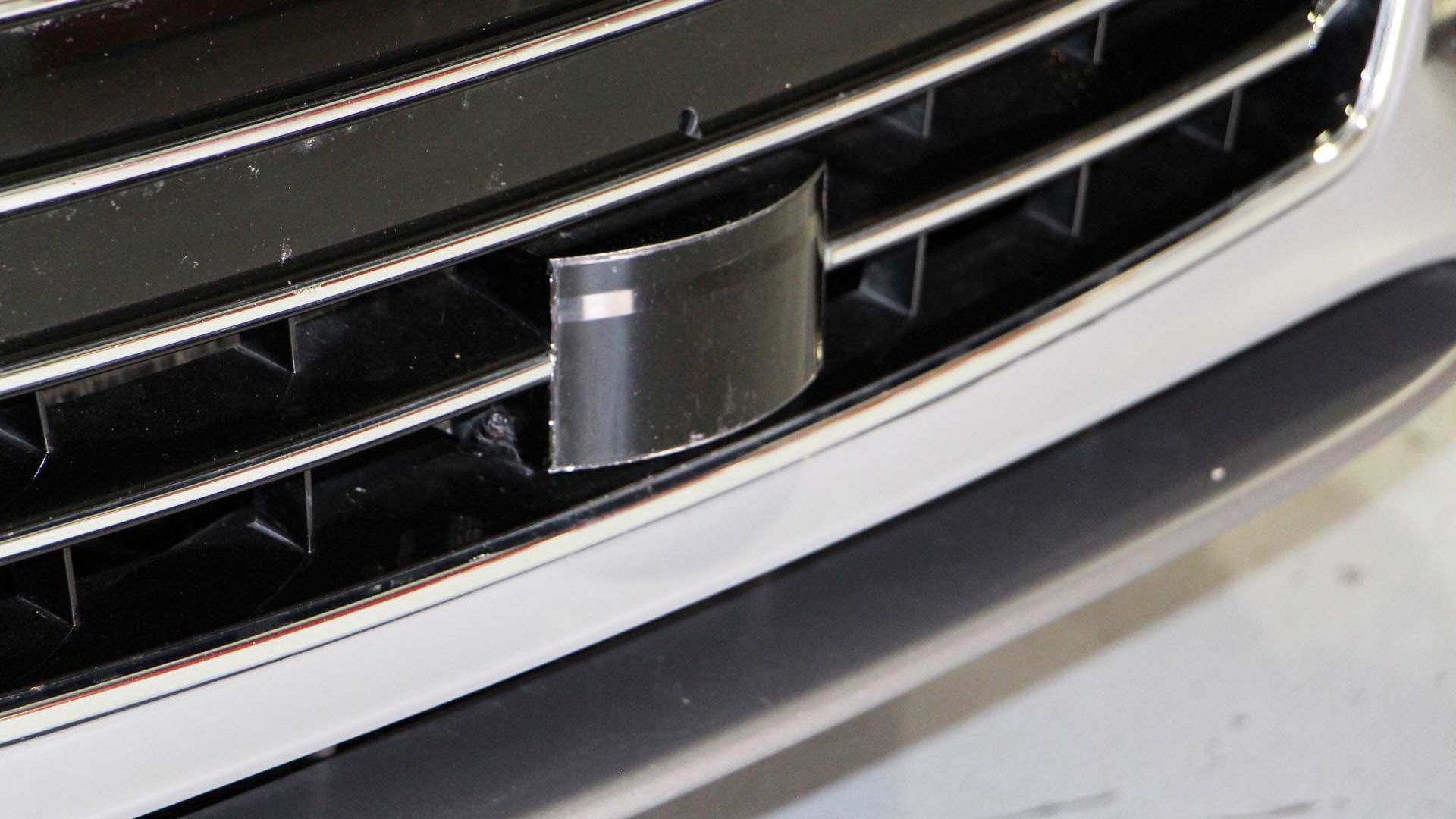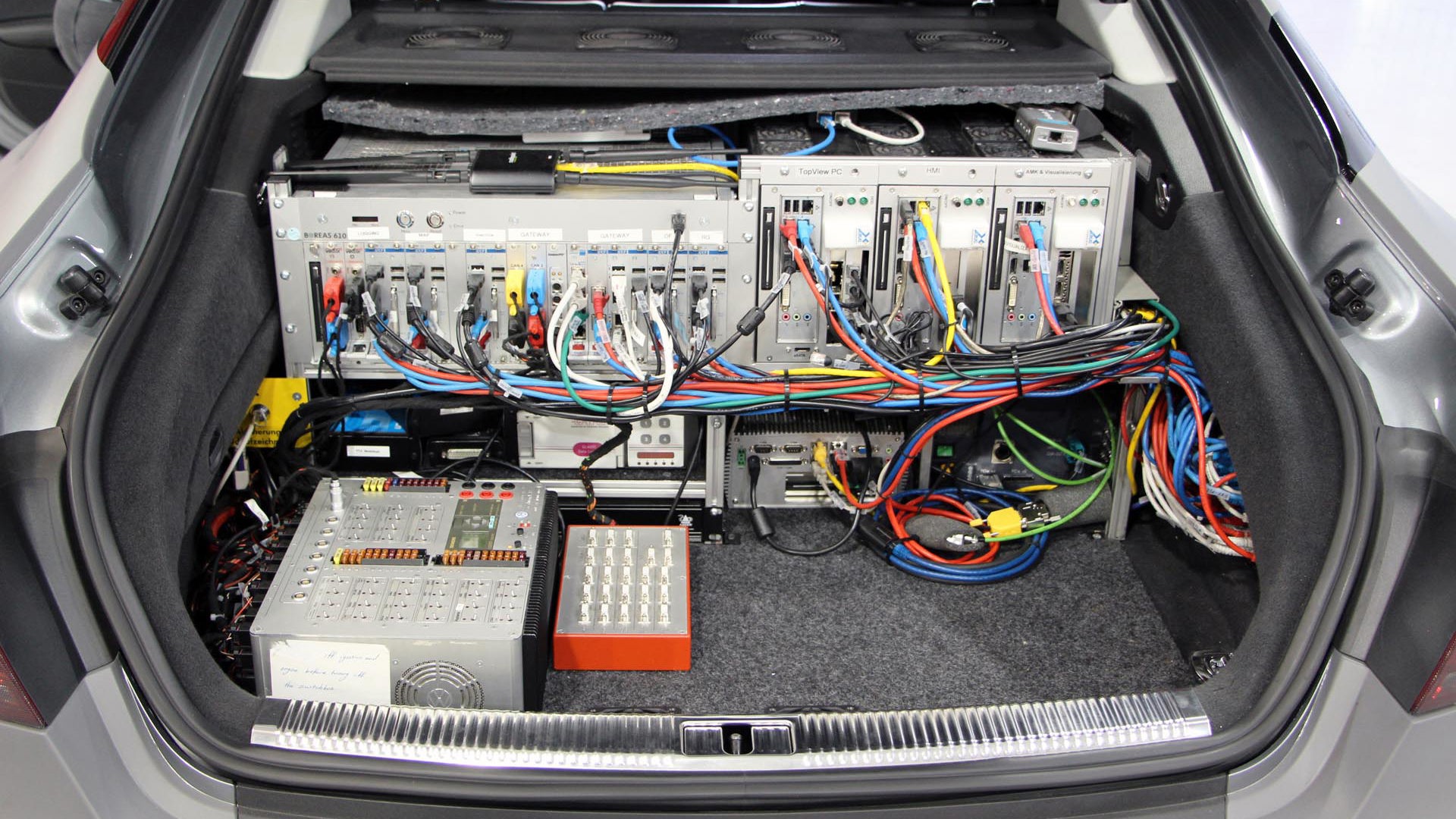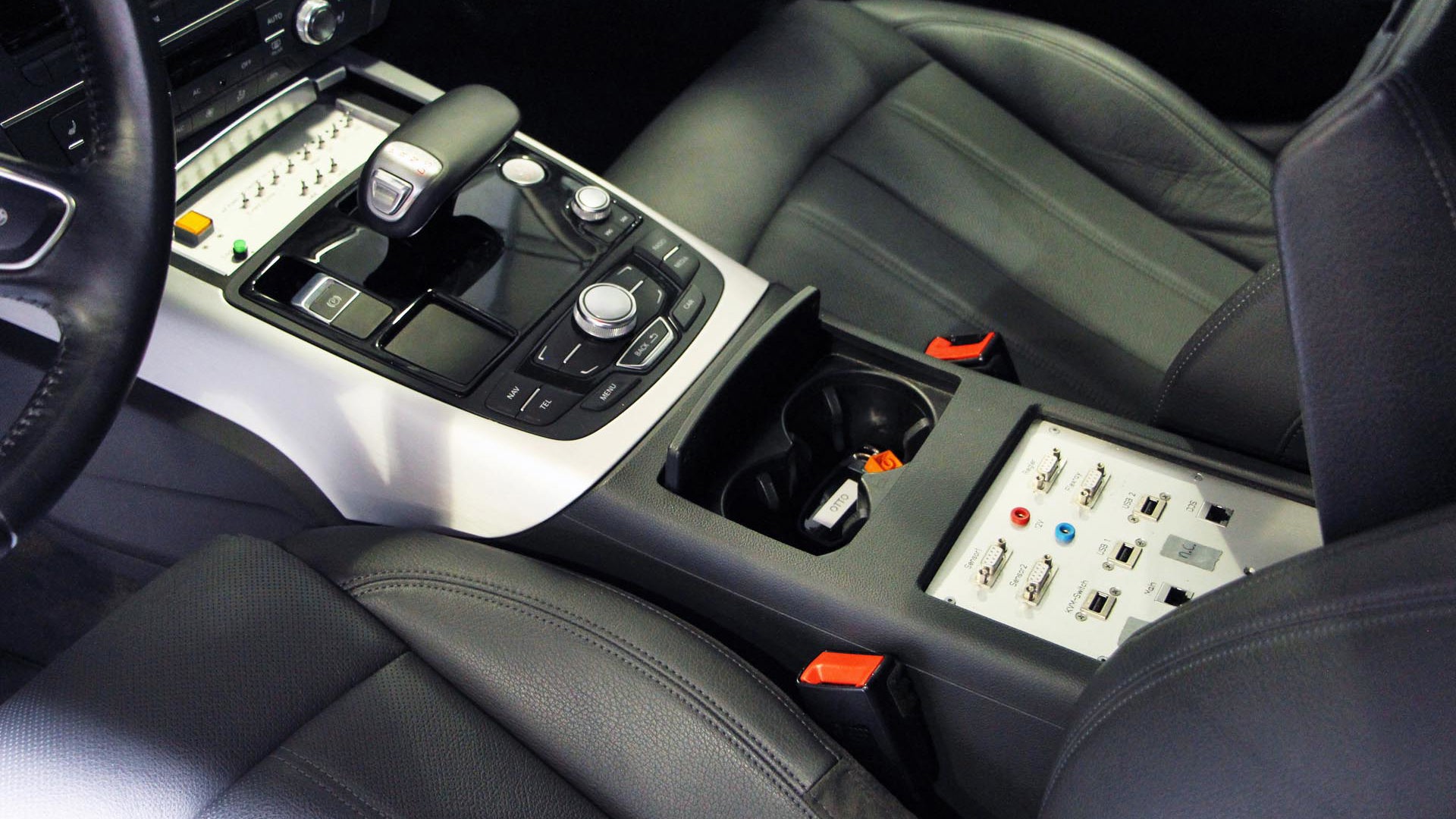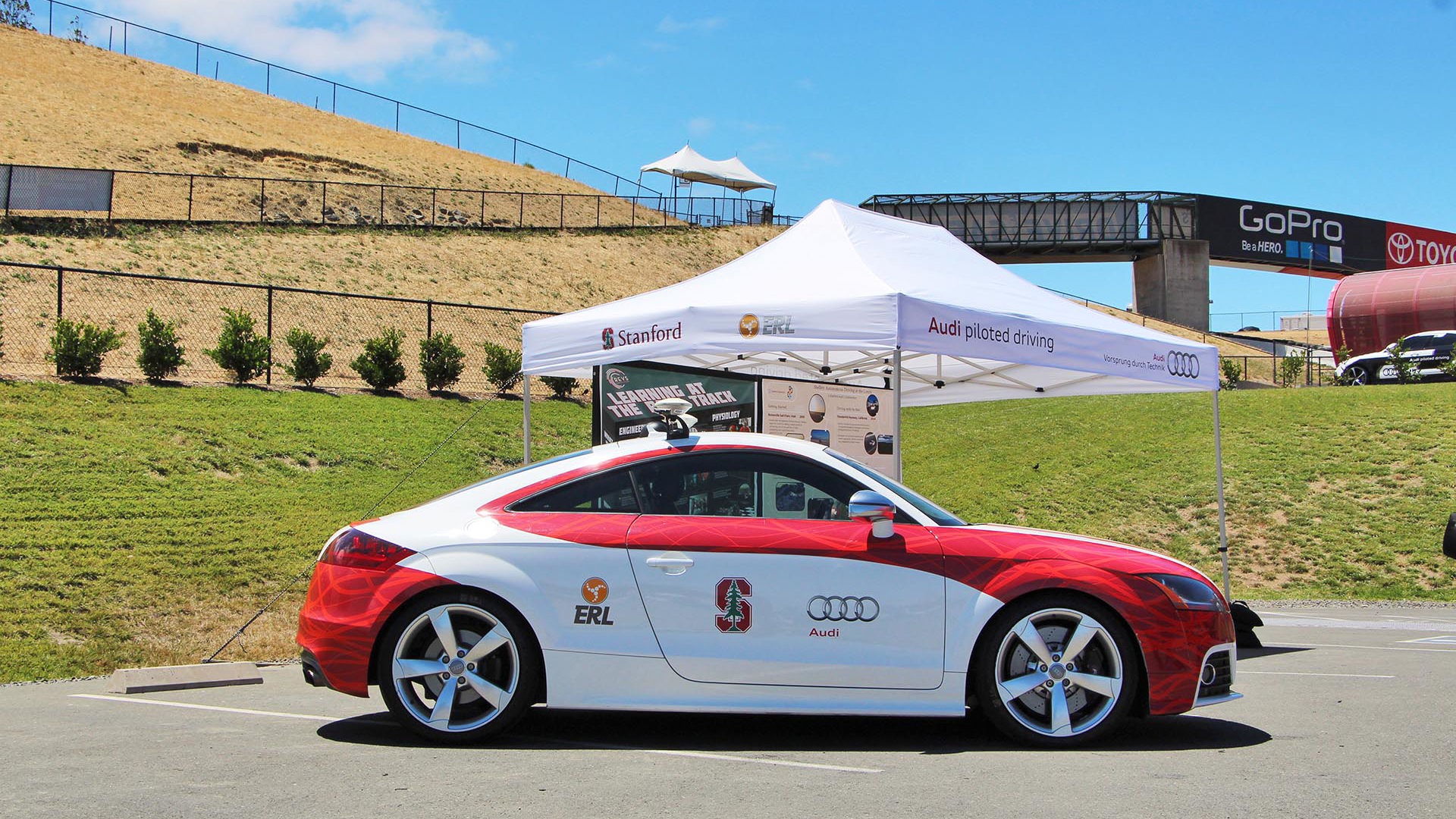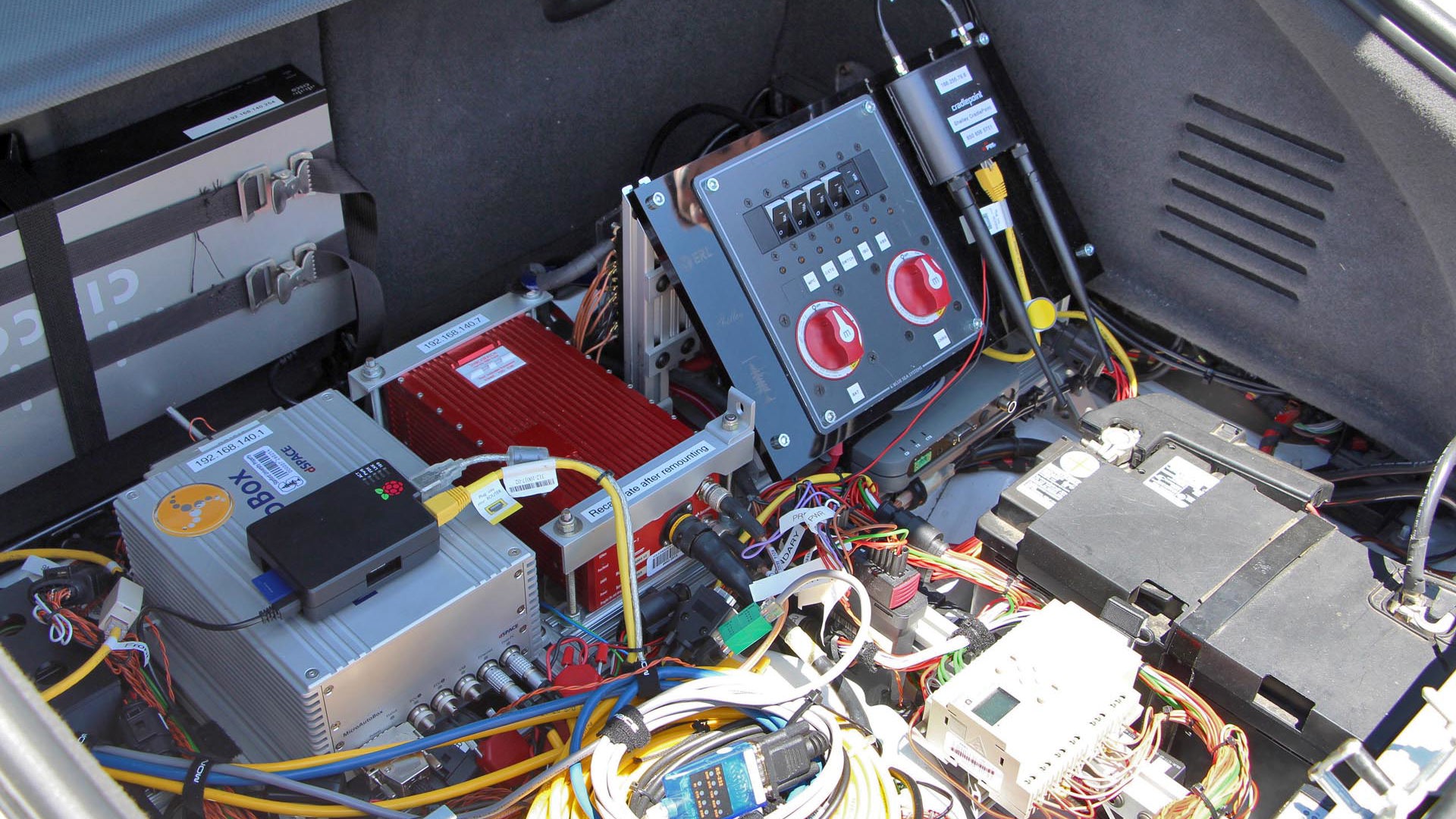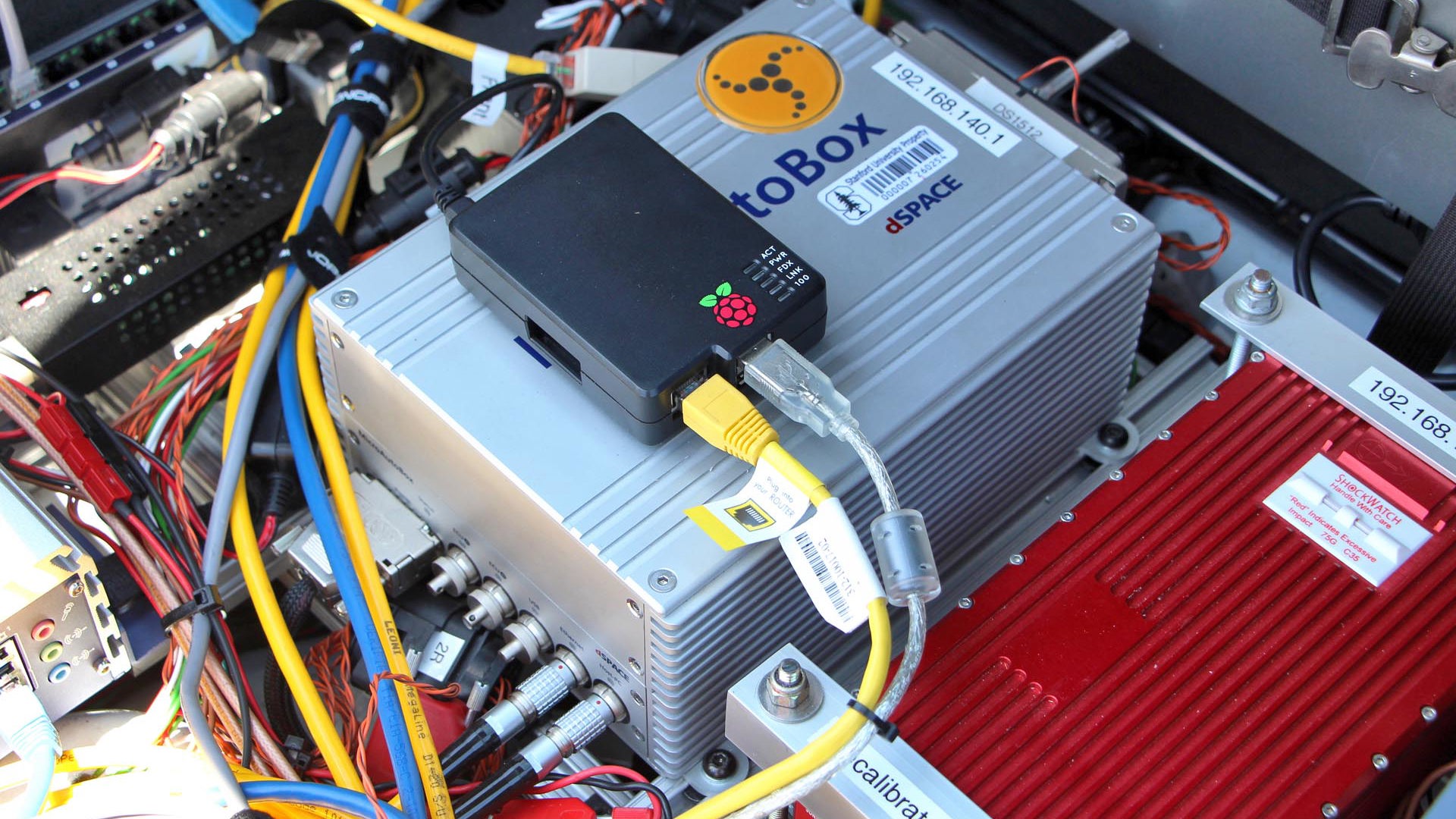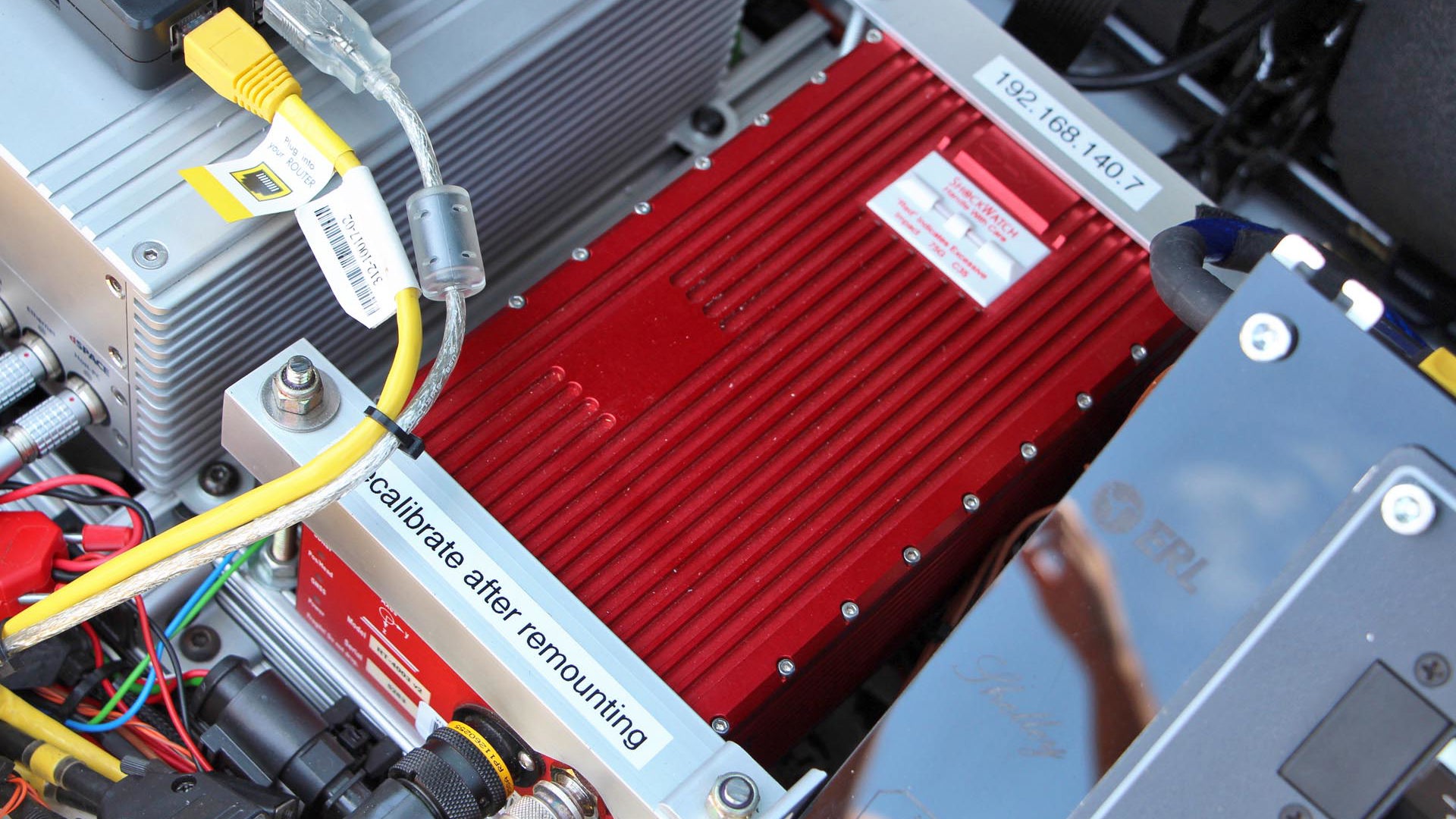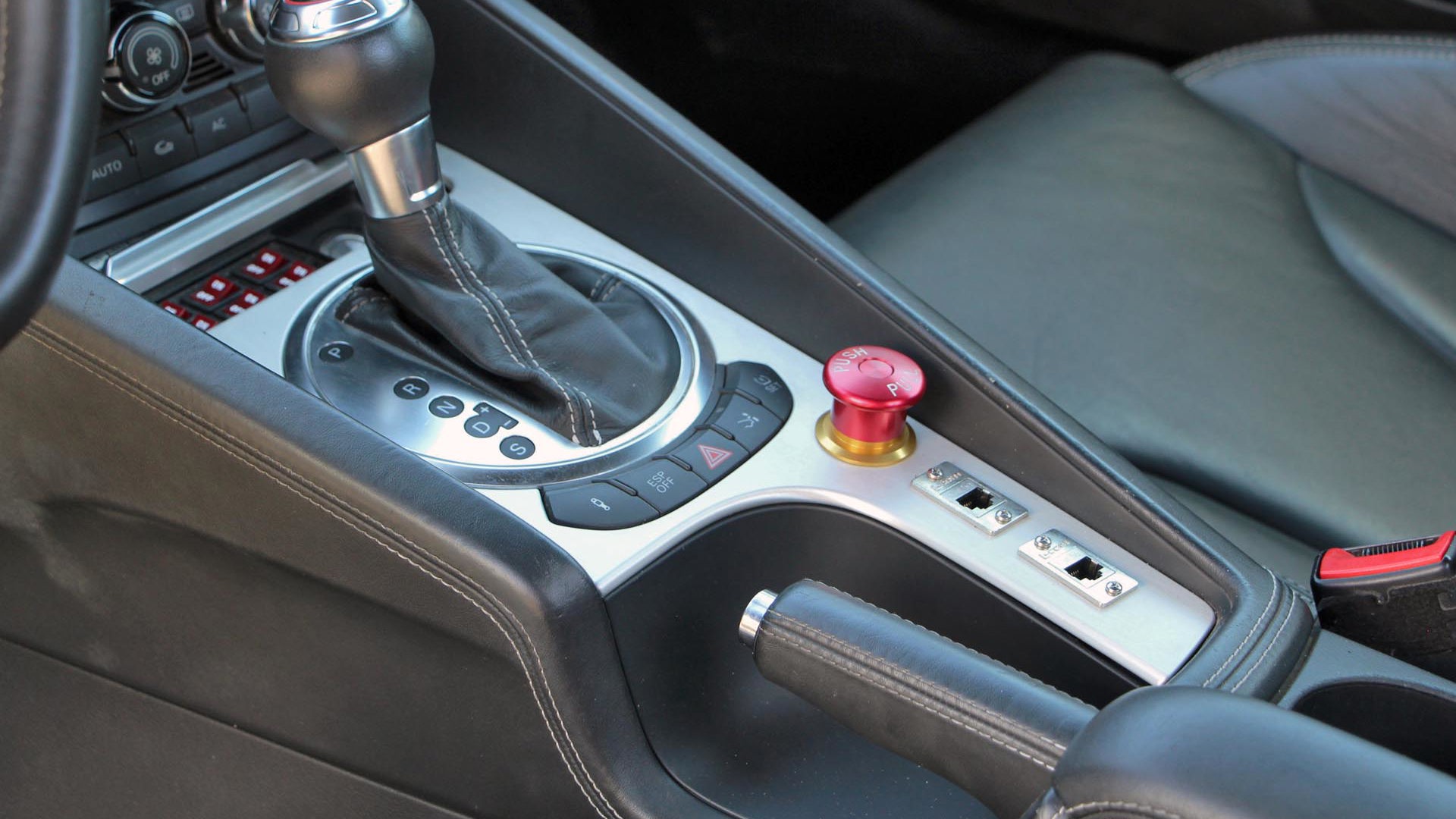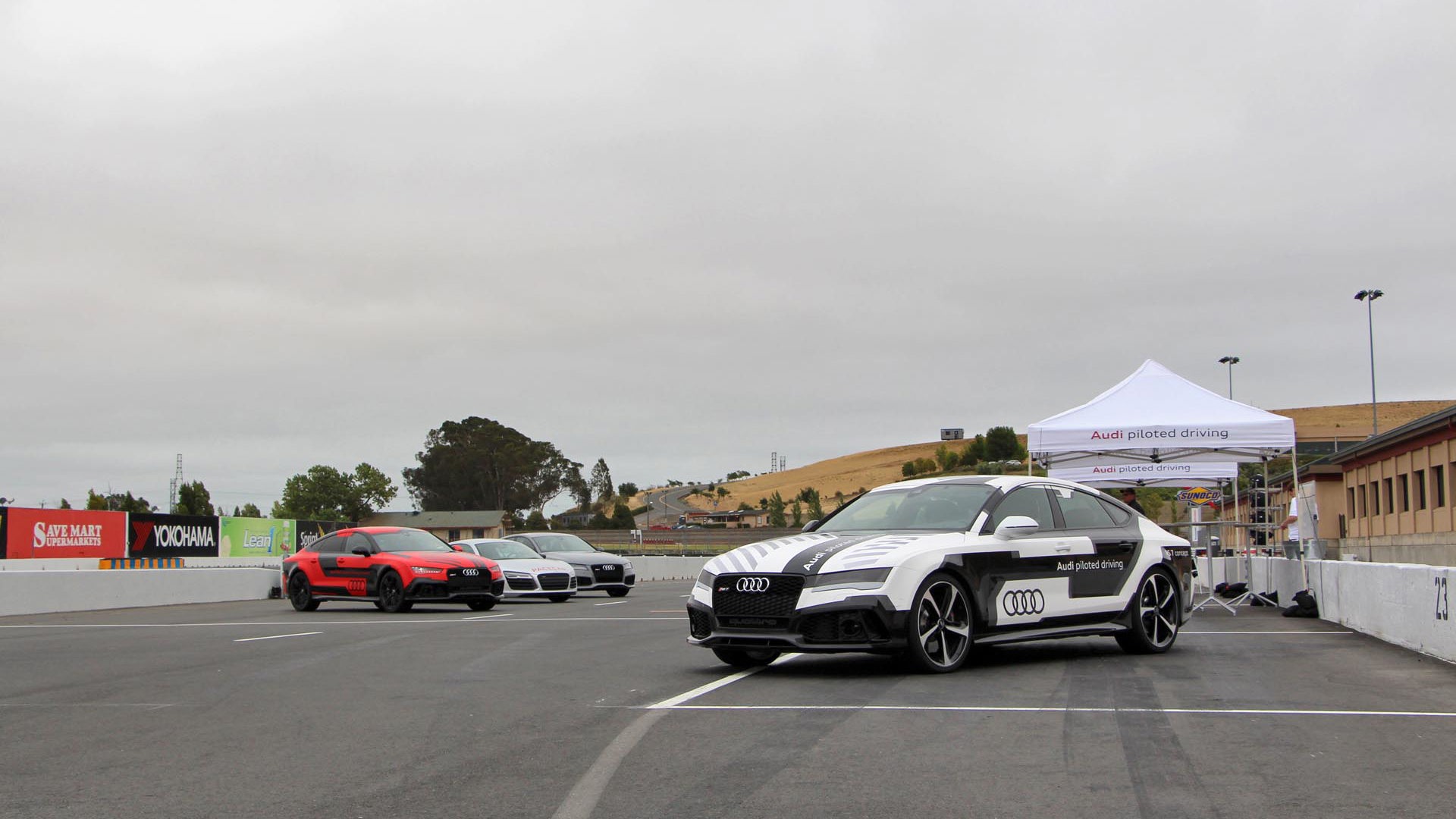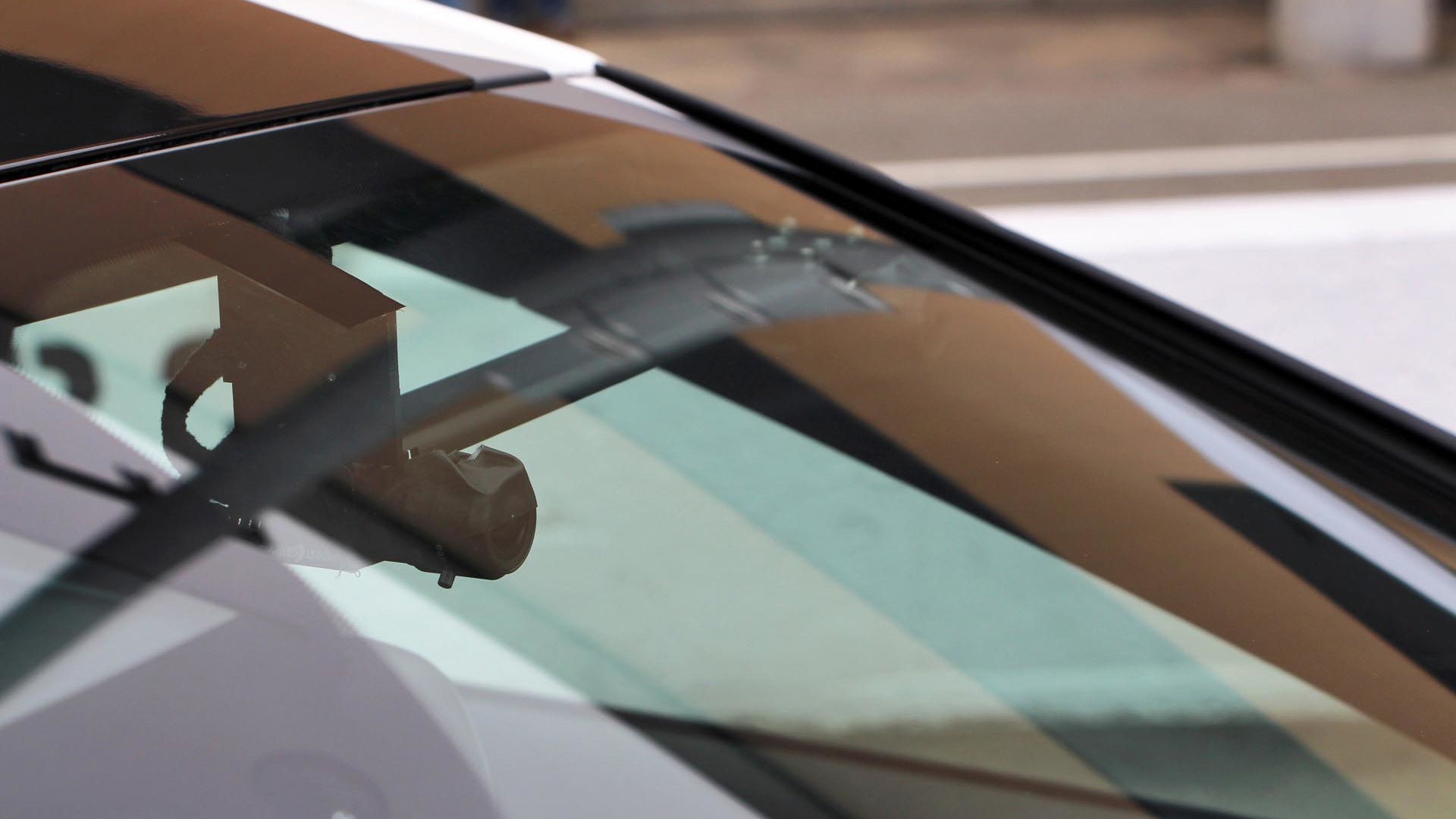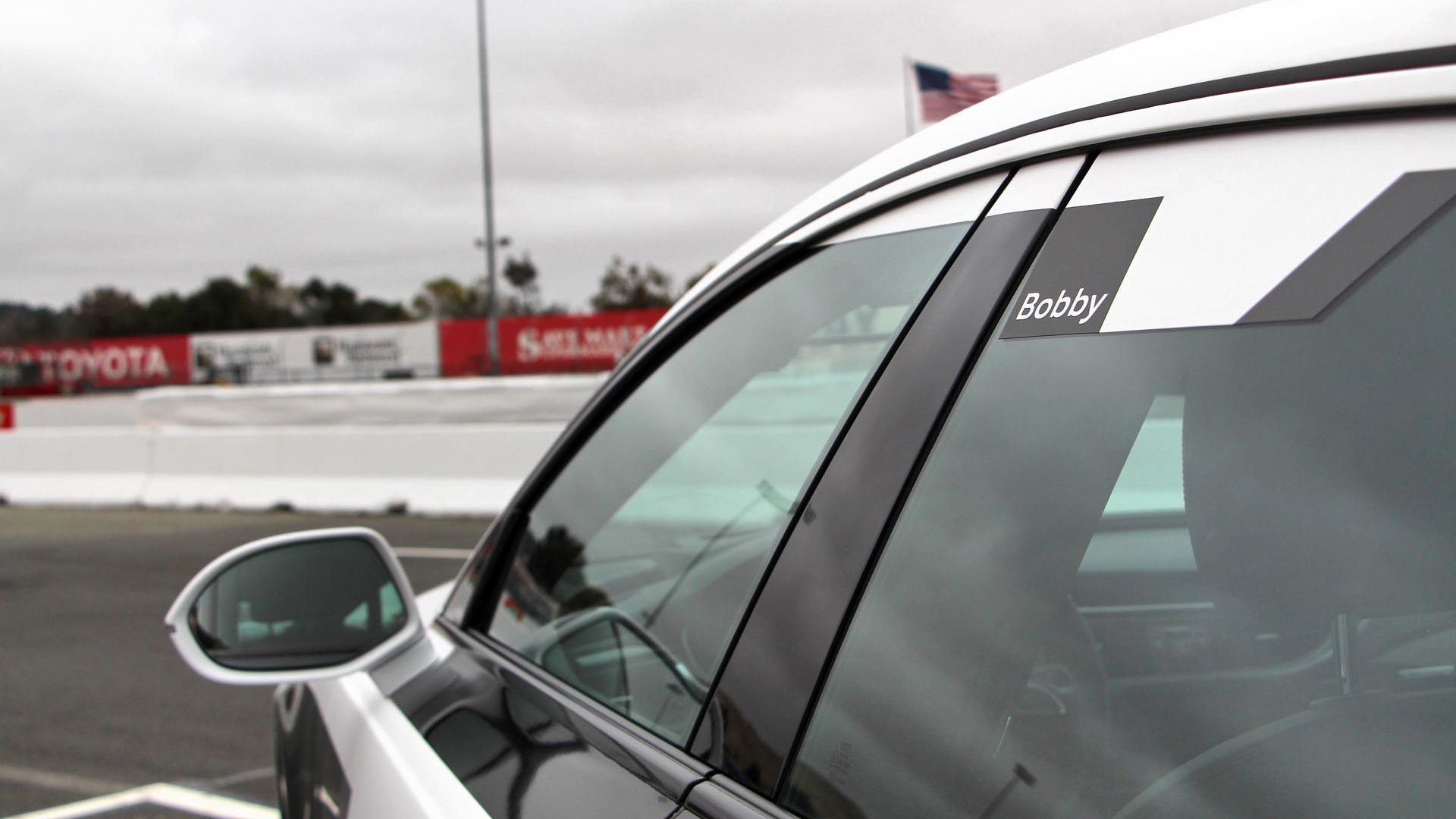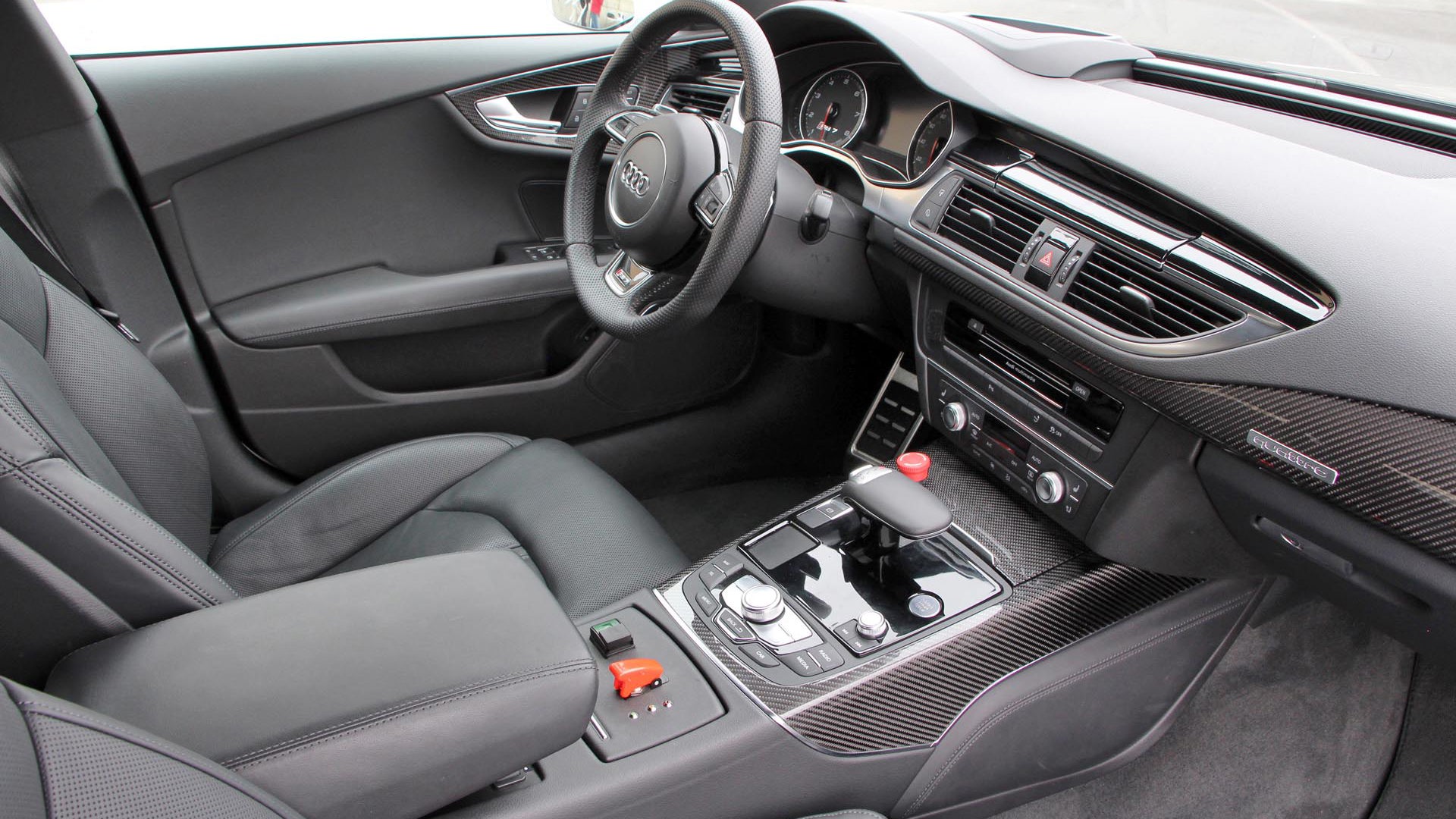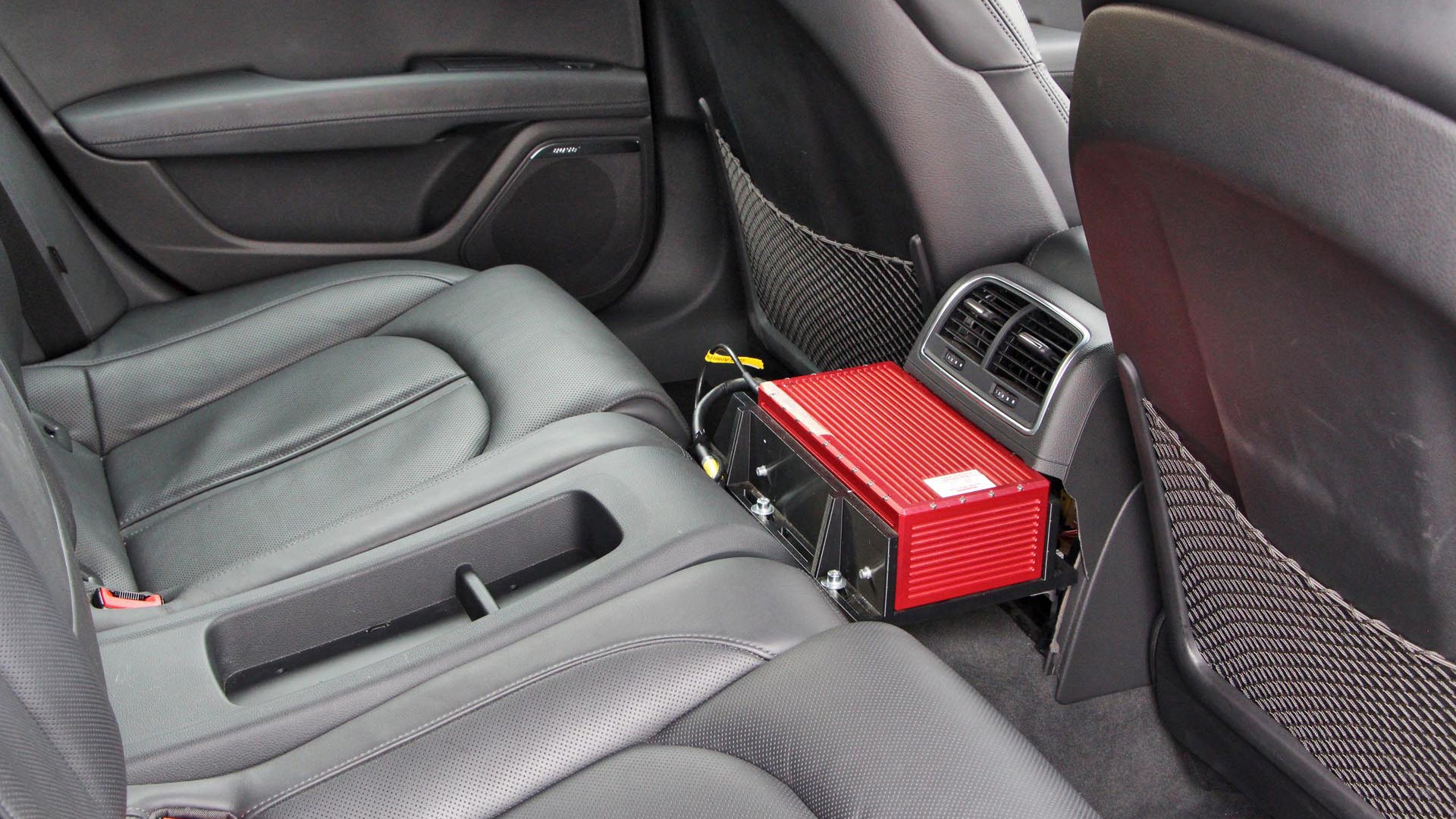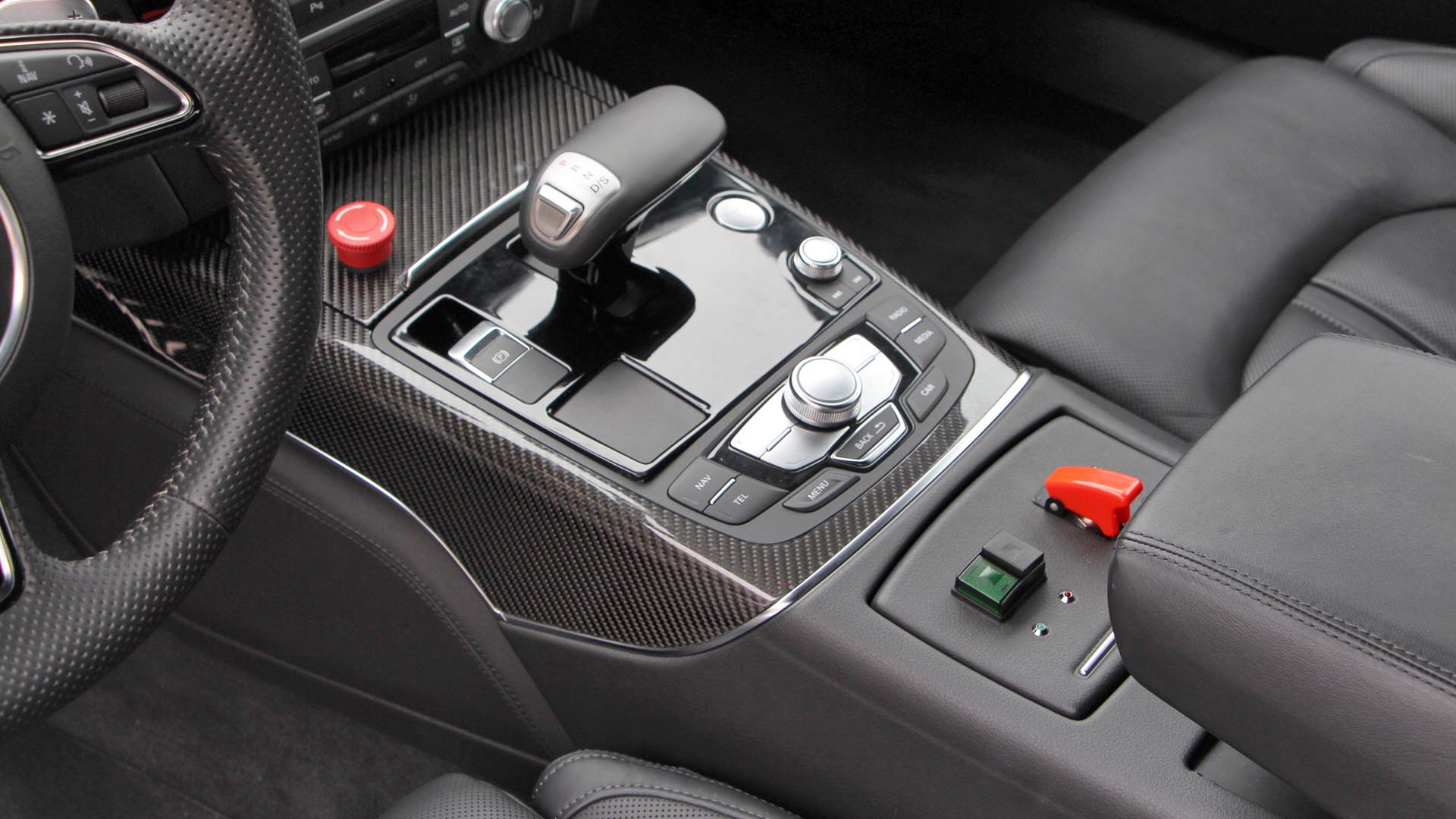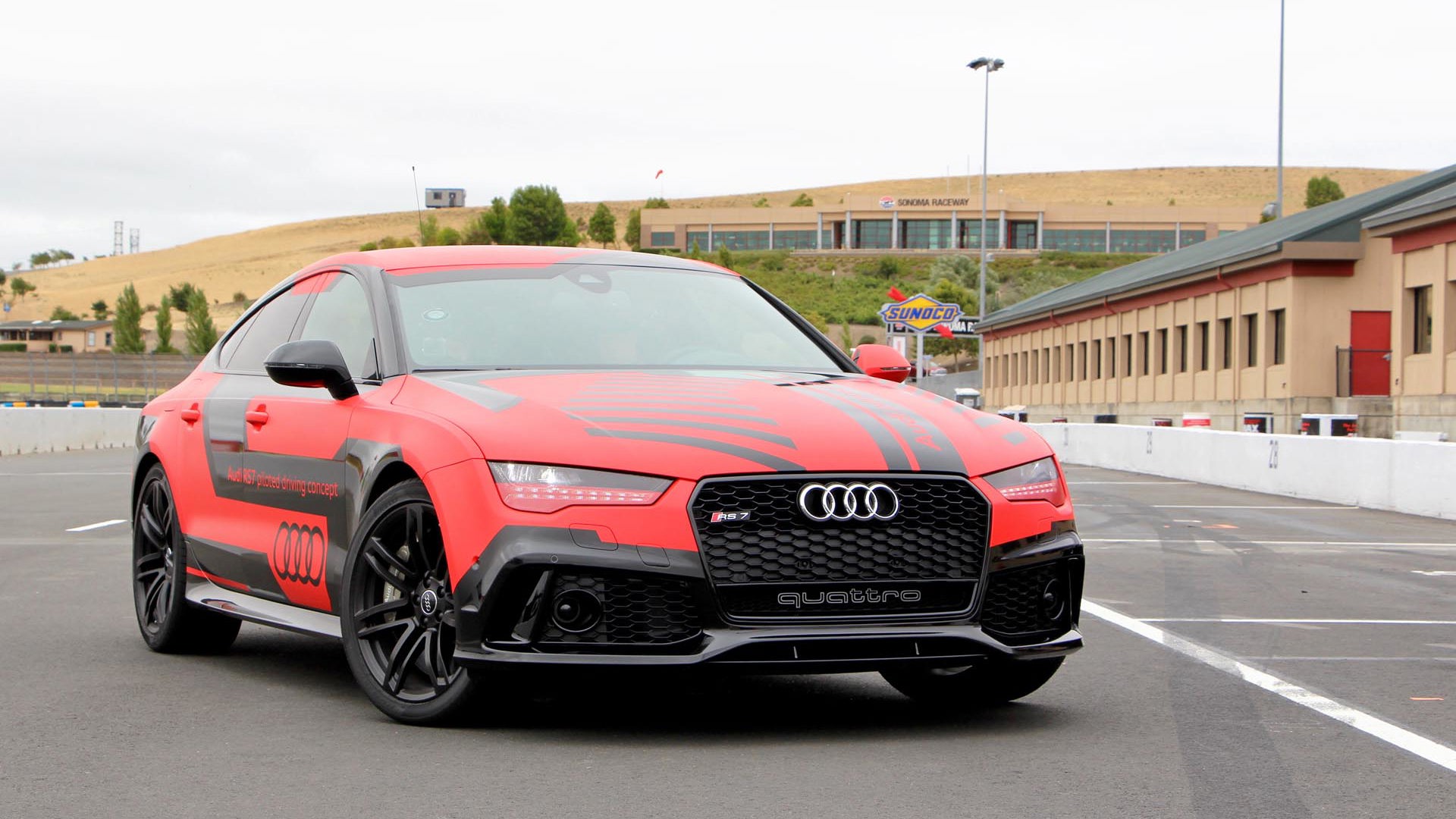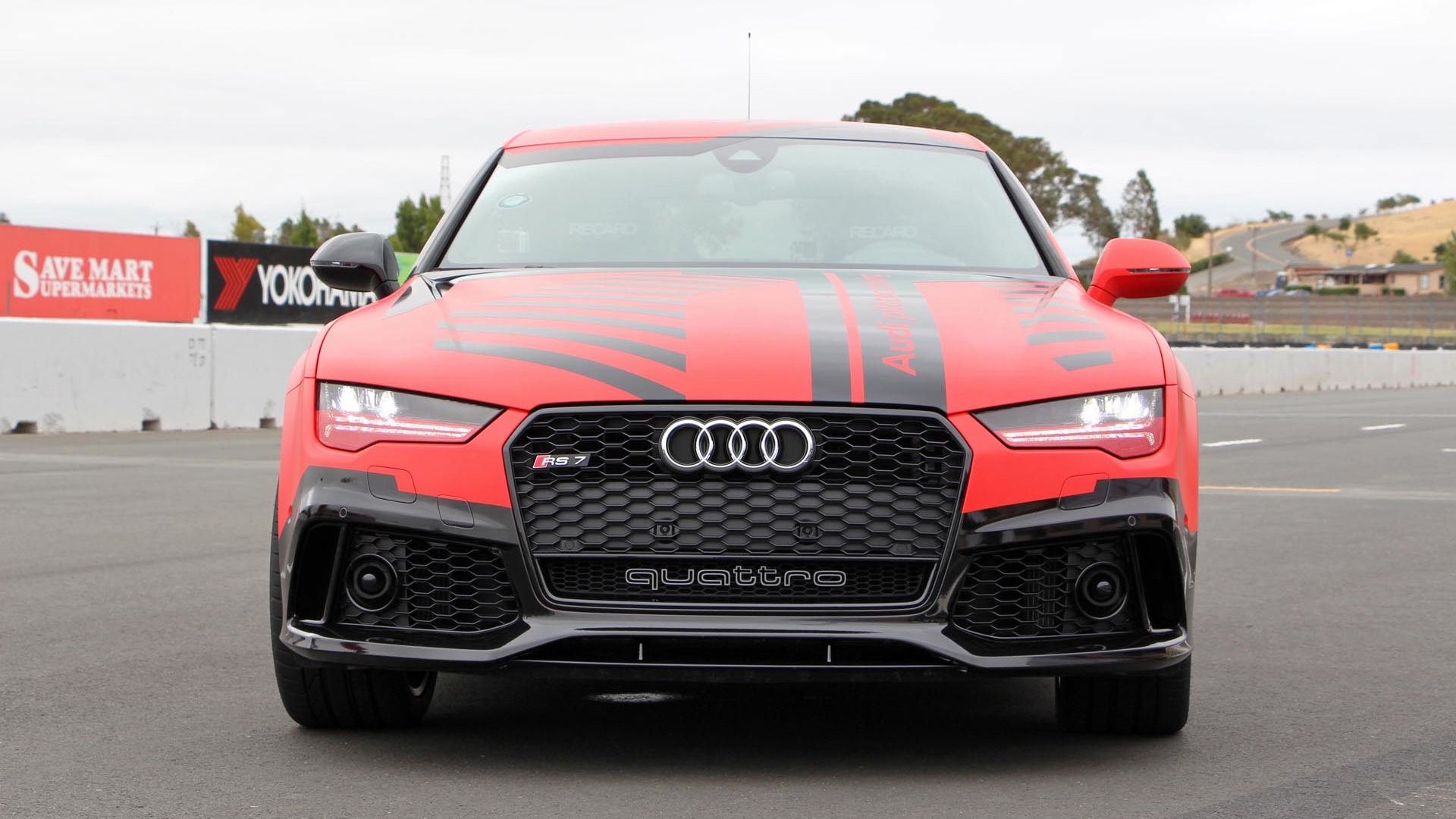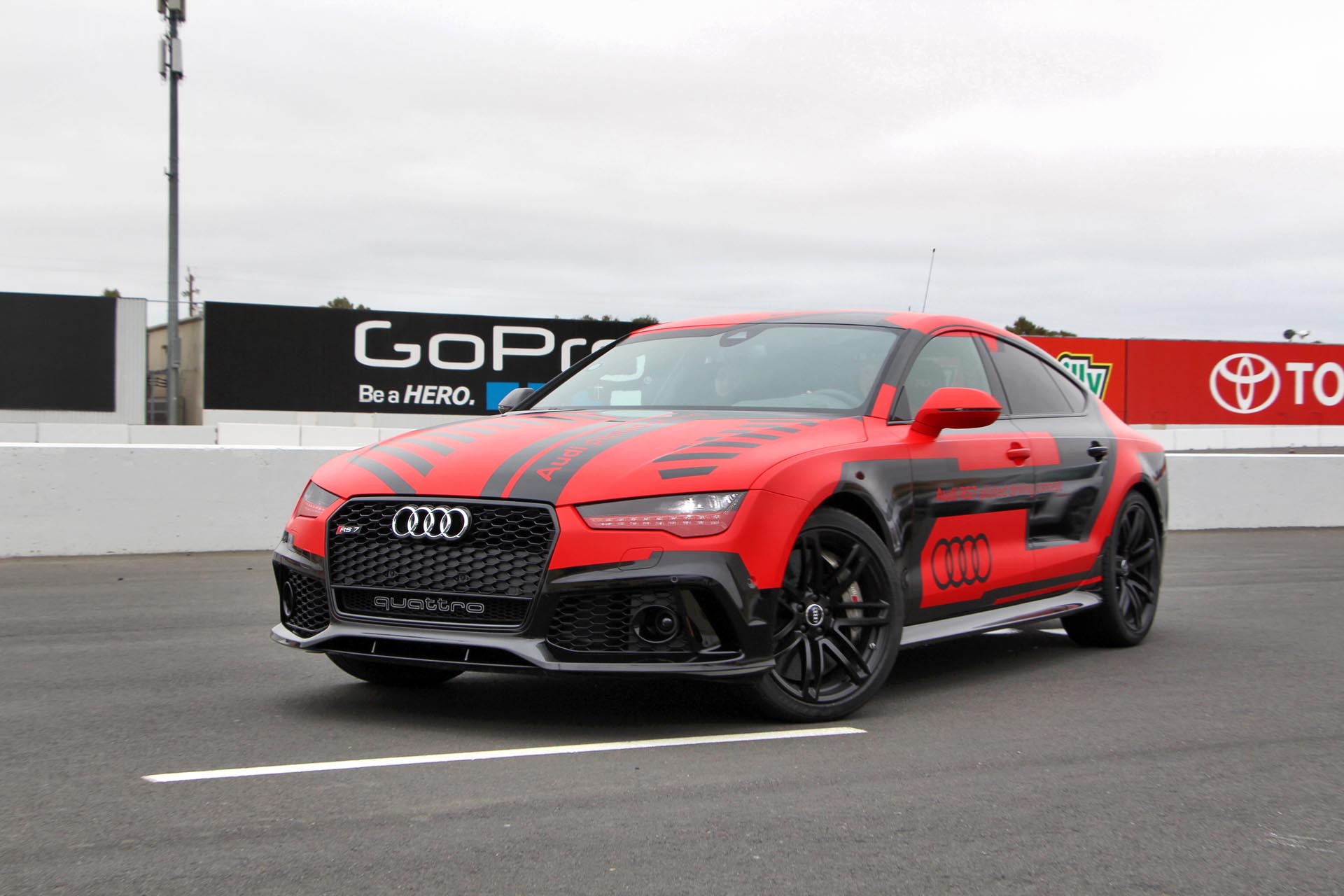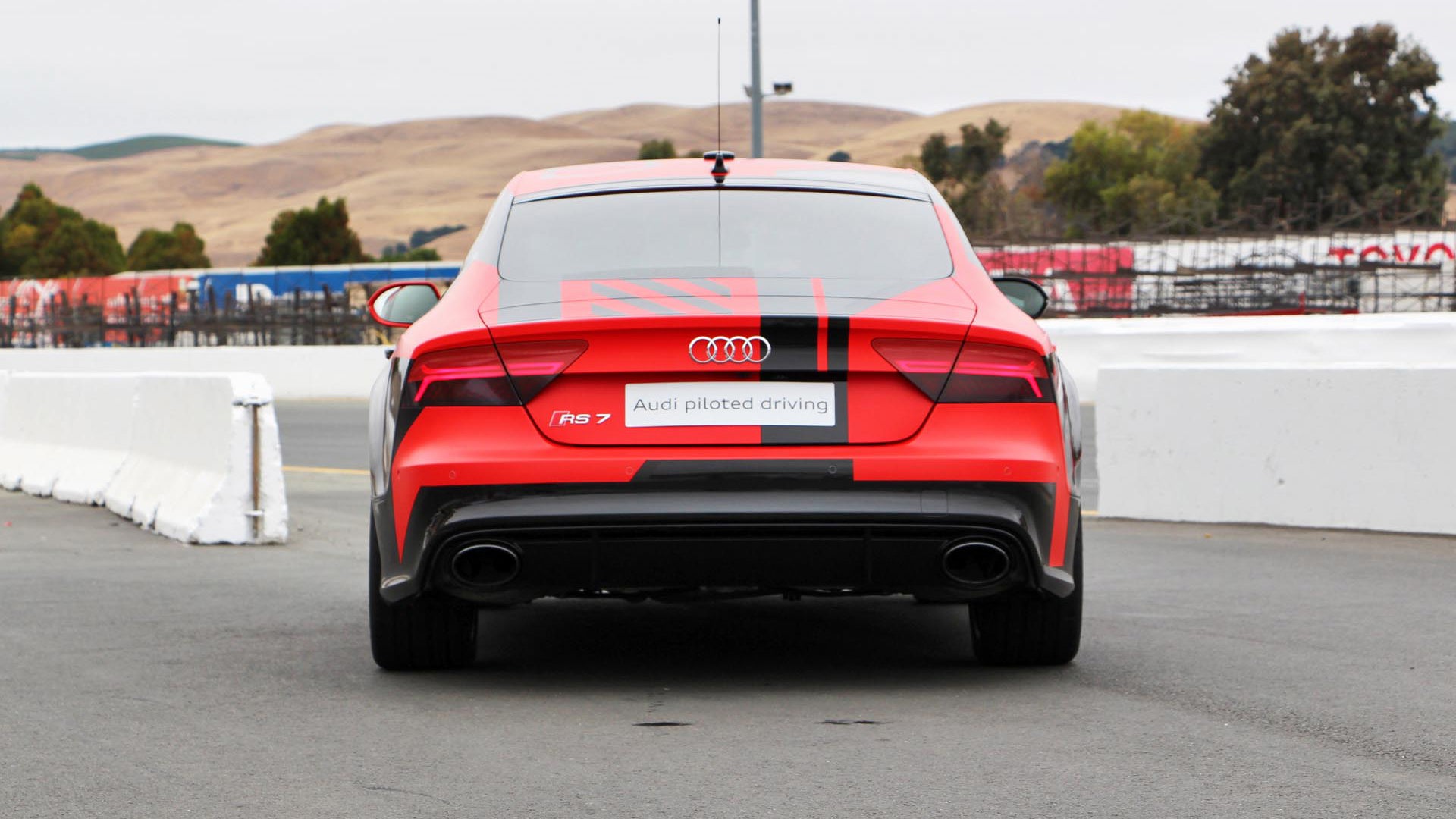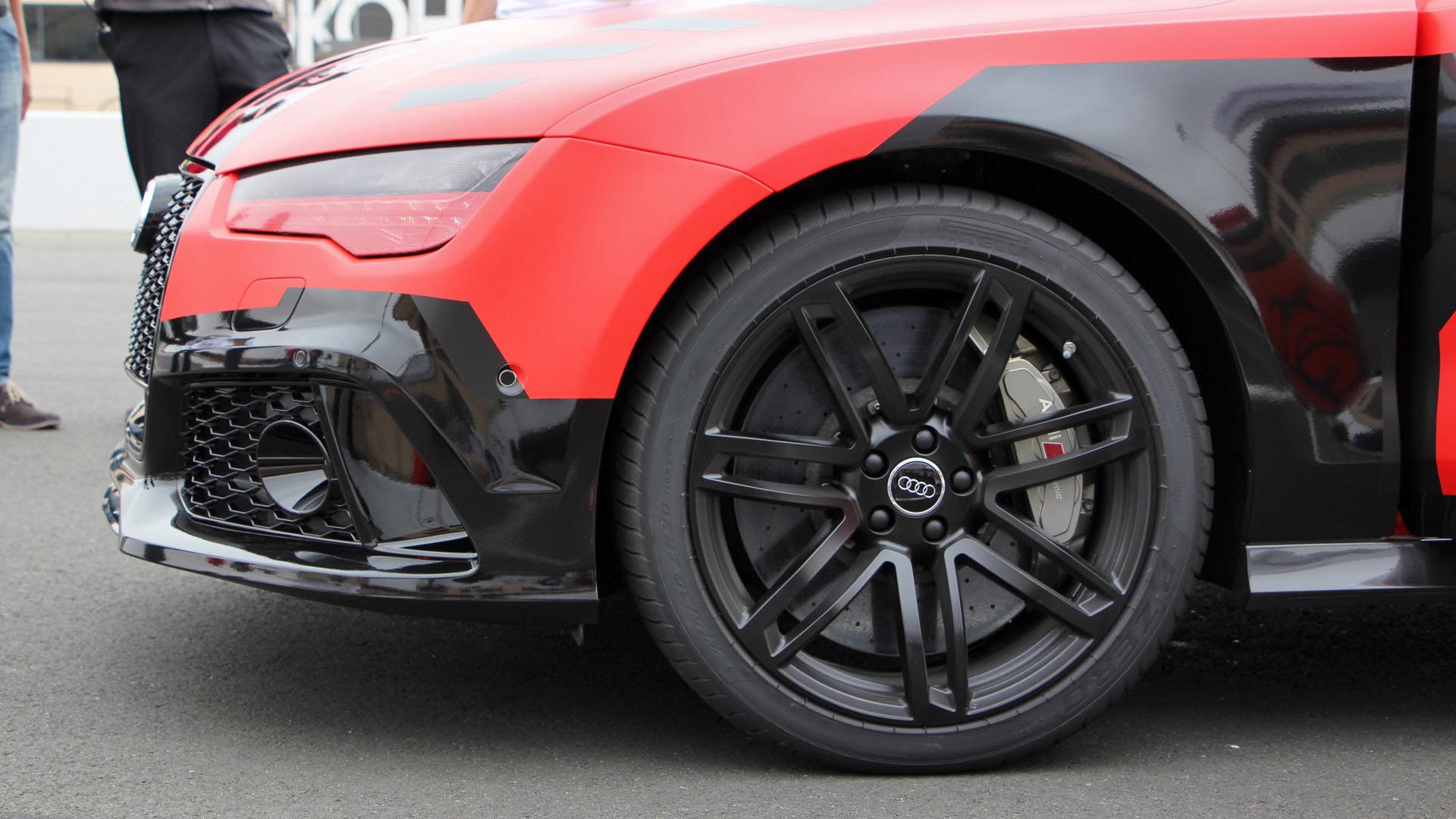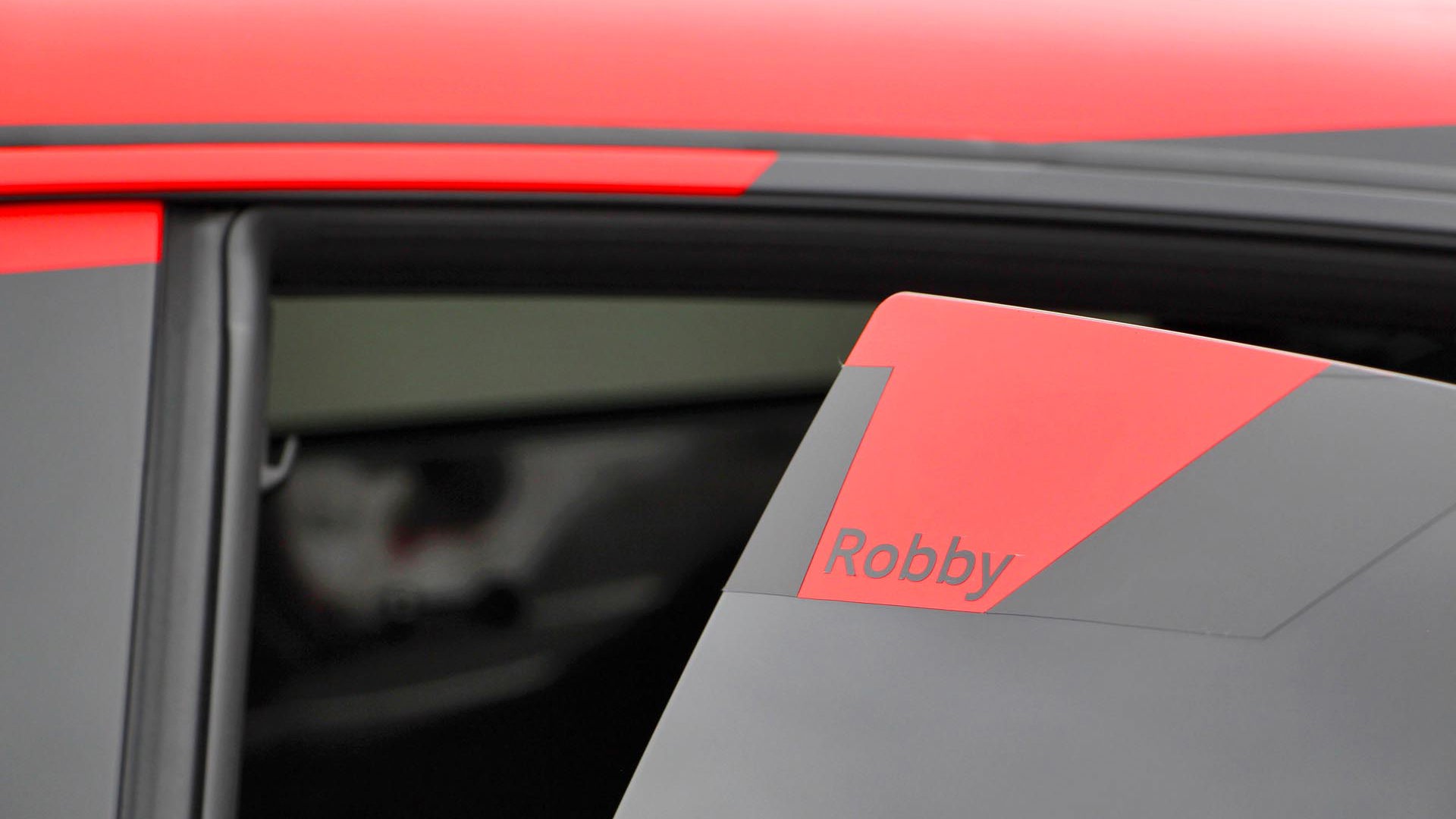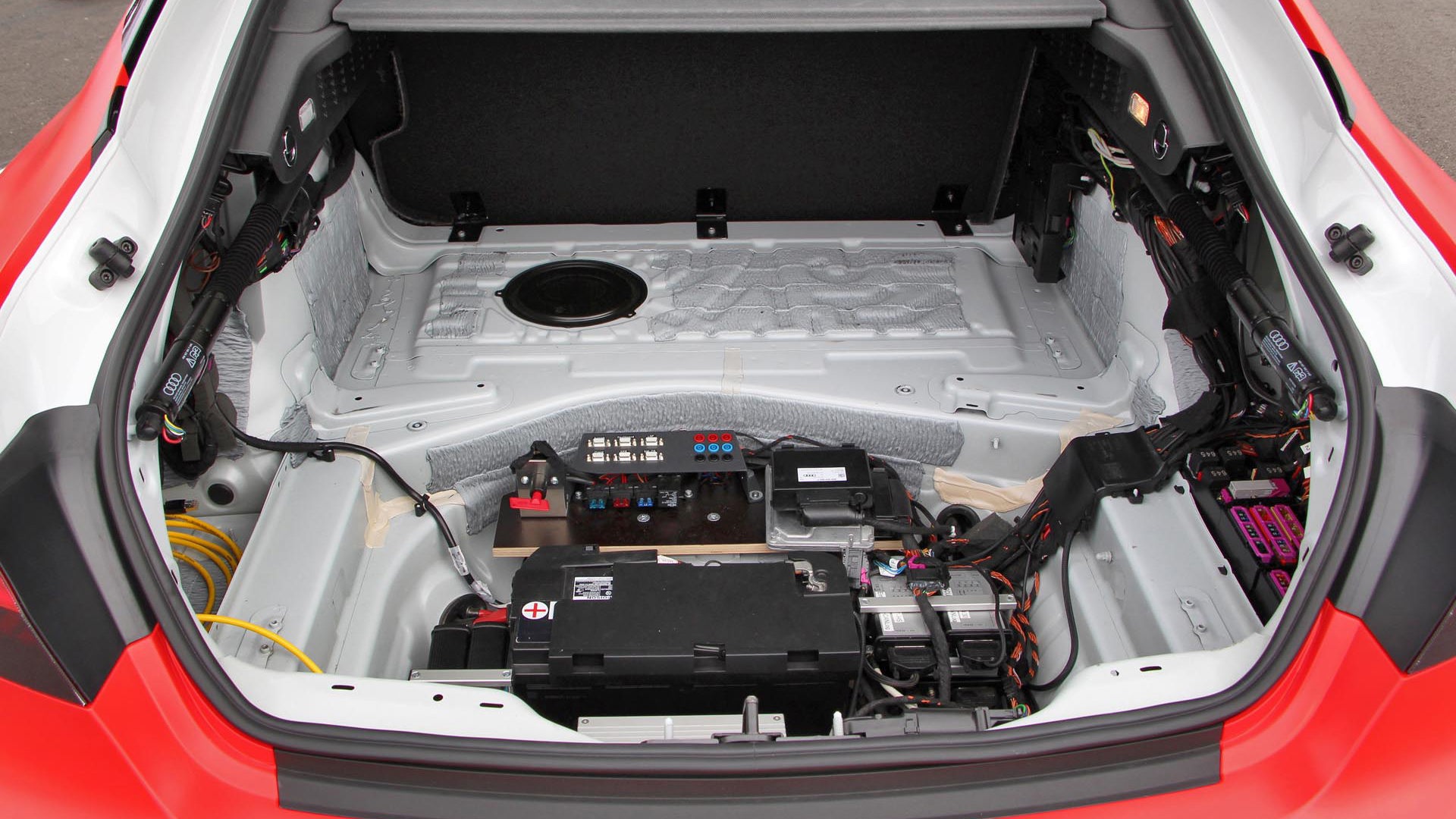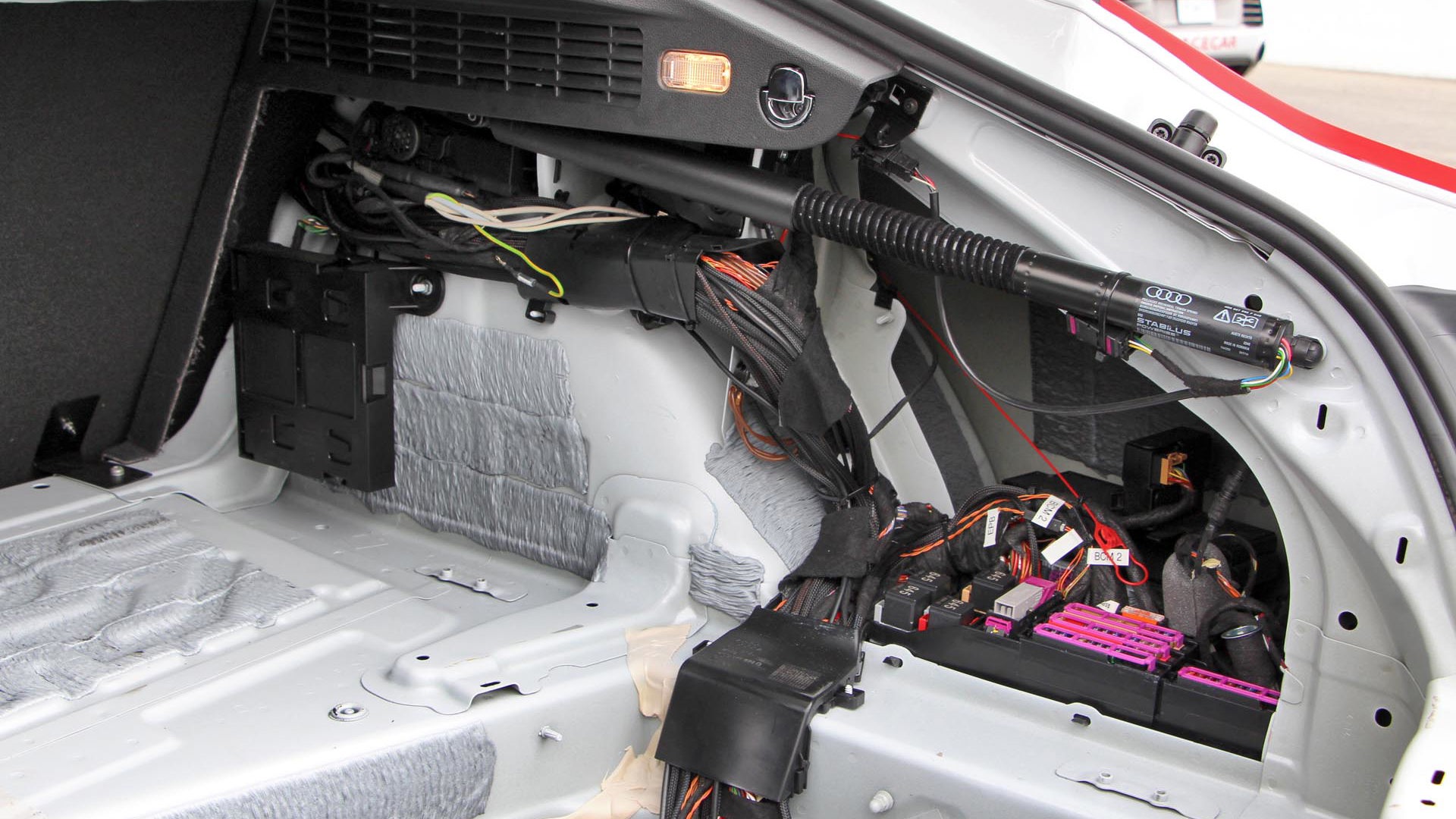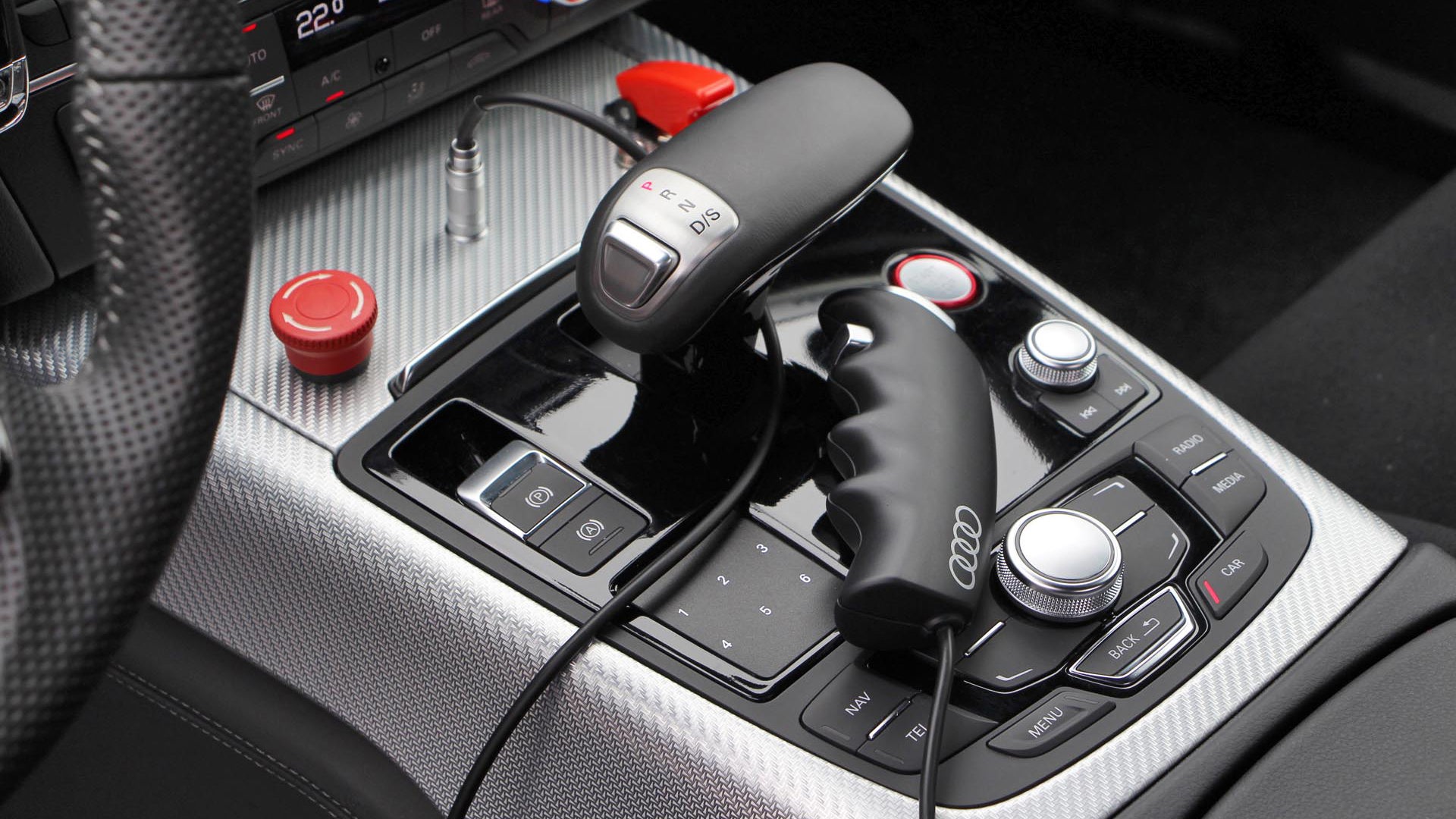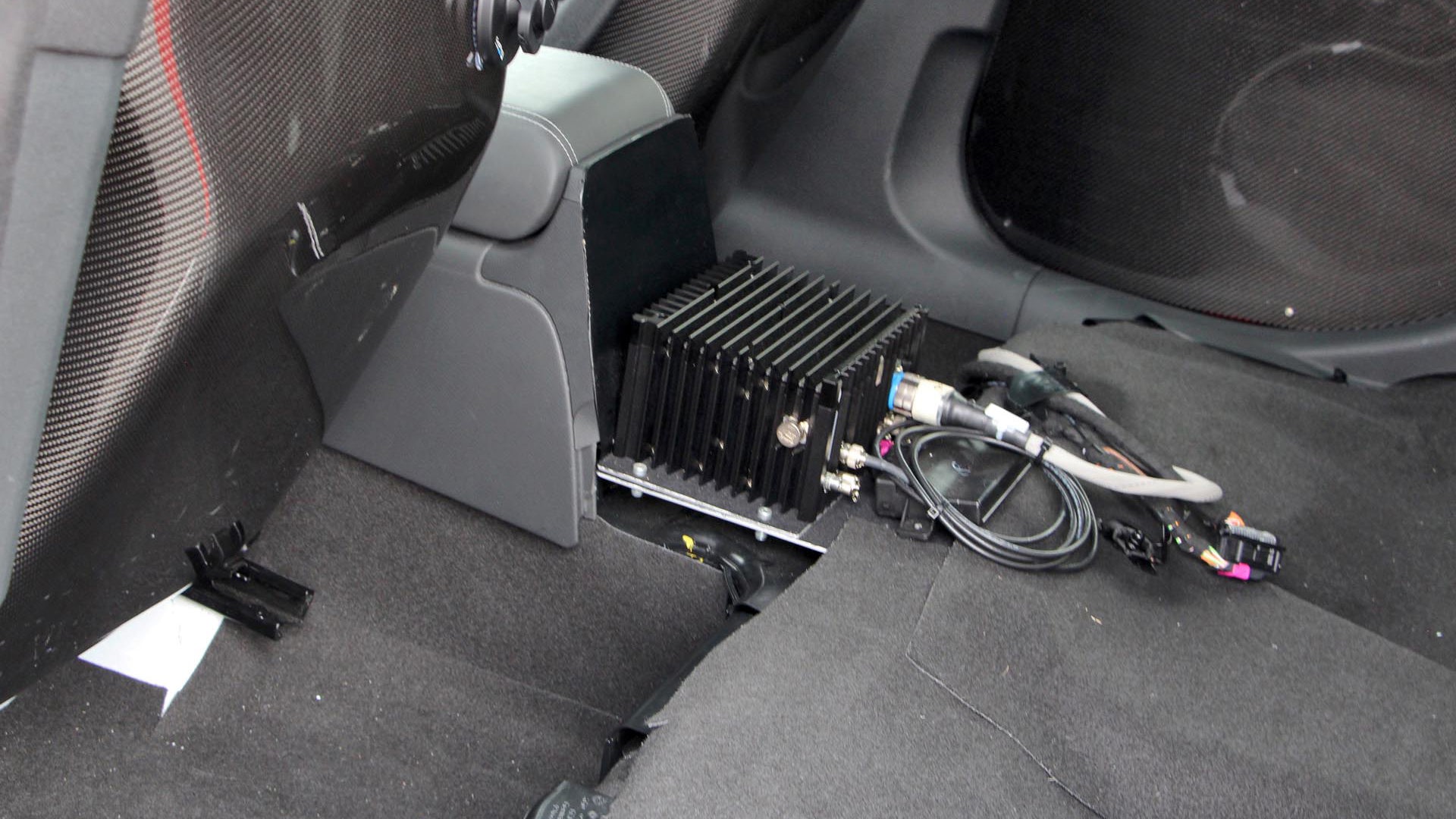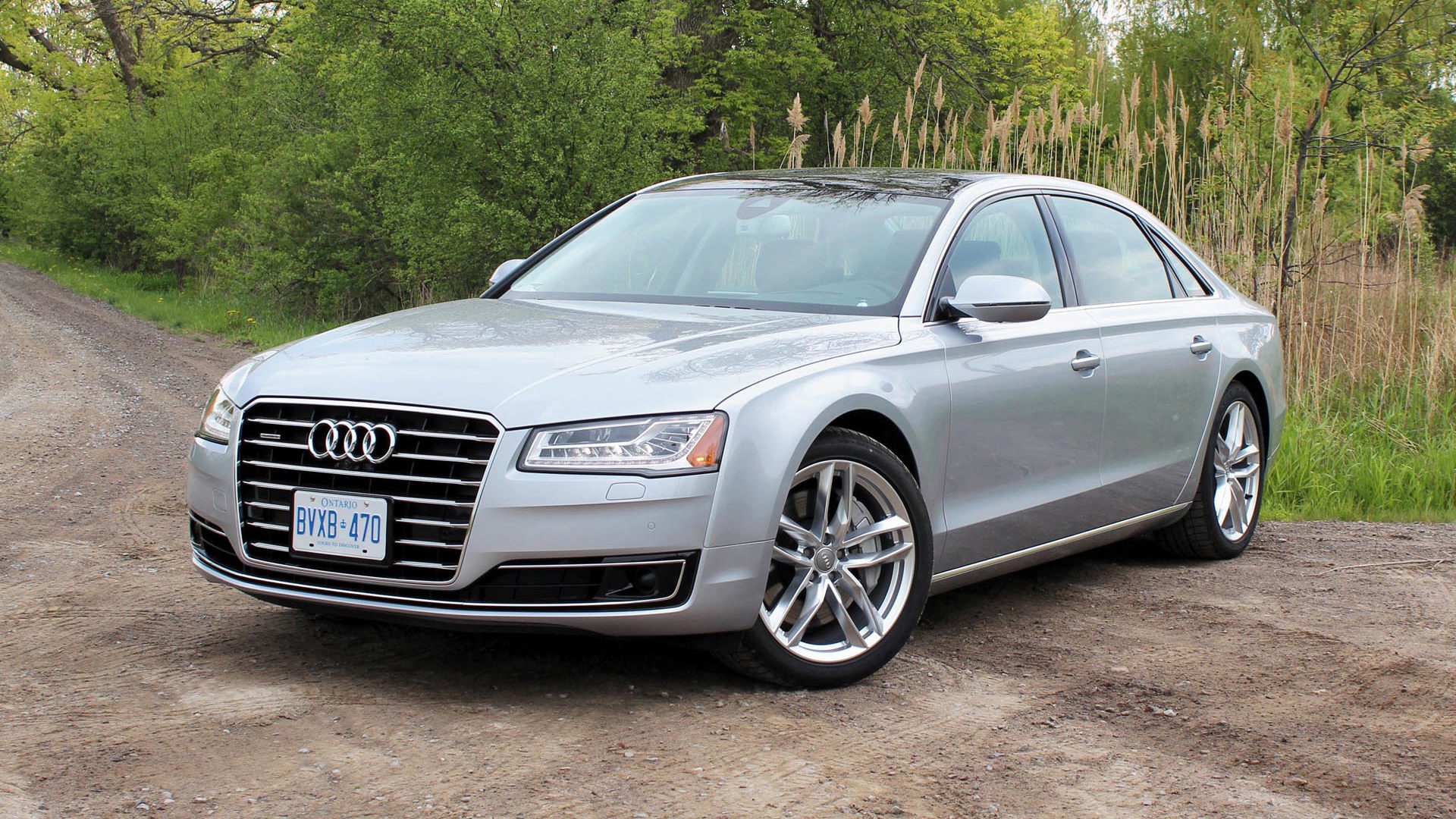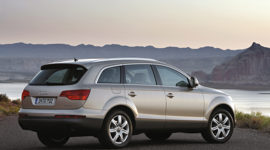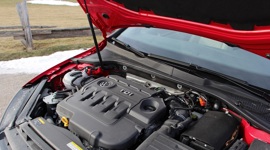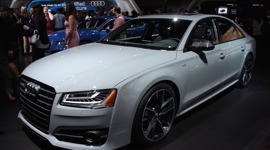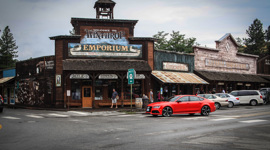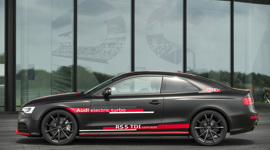Meet Bobby.
Bobby is an Audi RS7. With a brain. His brain is made from metal and circuits and wires, and he has camera eyes and GPS ears, and he can learn a track in two laps, and drive it faster than you or me could without years of training and laps and laps to learn the track.
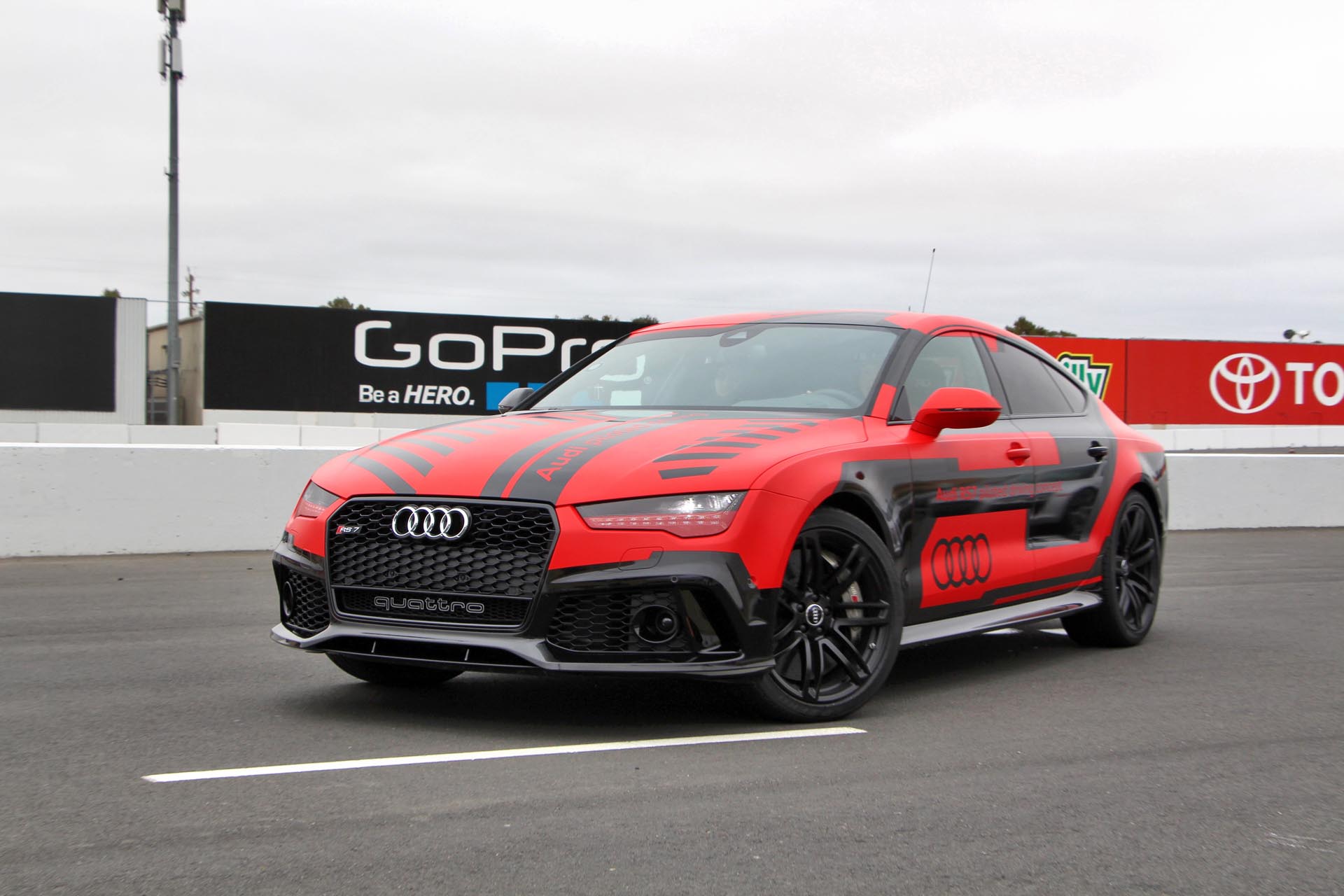
Bobby is the latest in Audi’s Piloted Driving experiments, a car capable of lapping a racetrack on its own after only two ‘track walks’. For Bobby’s purposes, the ‘track walks’ are two laps driven by a human at each edge of the track, during which Bobby can map the track’s coordinates using extremely precise digital GPS sensors in concert with a static antenna trackside. How precise? Within 1-2 cm precise. Bobby’s digital GPS is the only extra sensor necessary beyond the Audi RS7’s standard suite of radar, camera and dynamic sensors. The rest is brains.
Bobby’s brain is in the trunk. It has metal boxes that algorithm and wires that amplitude and plastic boxes that gigahertz. If I had known I would need a technology degree for this event, I might have sent someone with an aerospace engineering degree. Or a teenager.
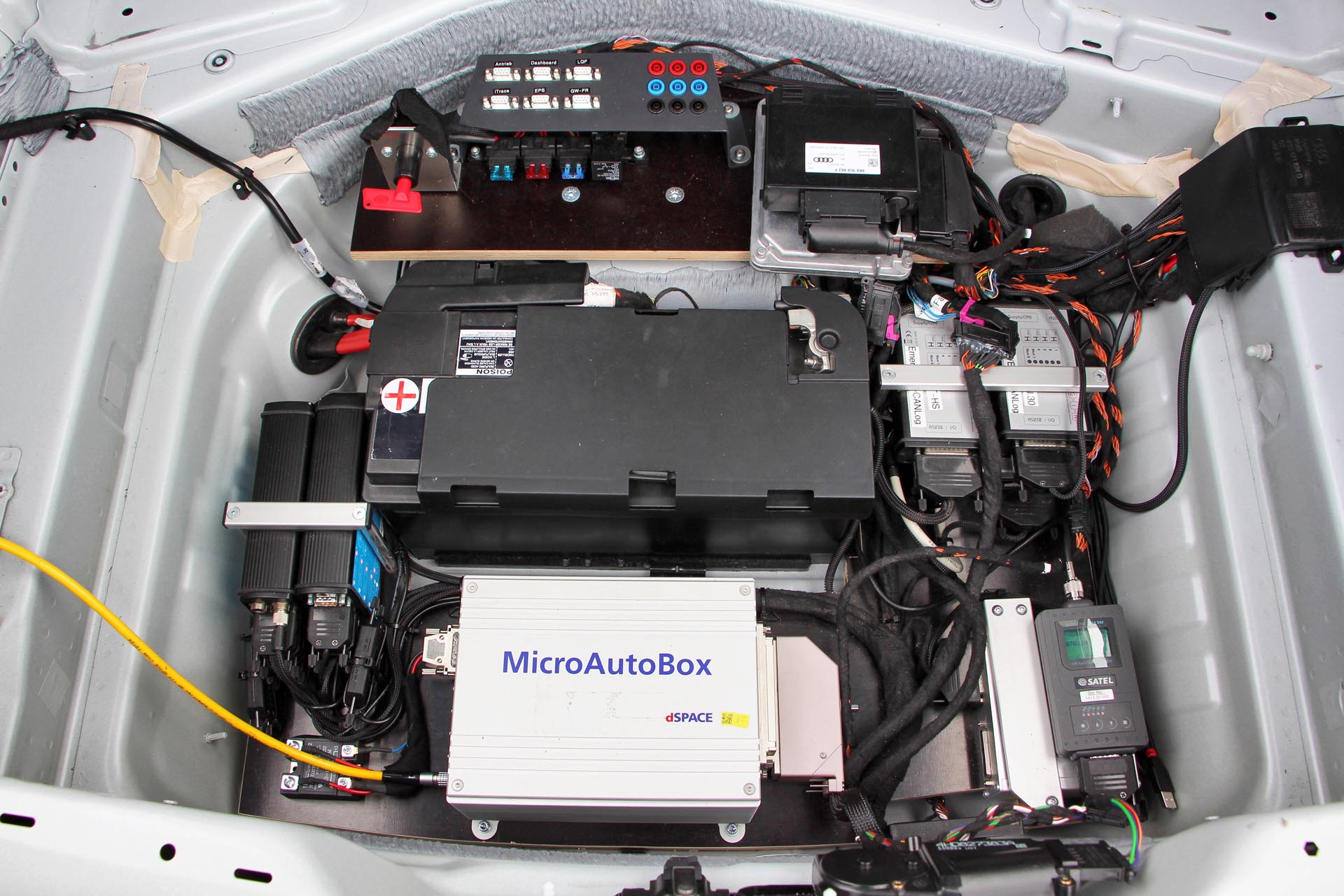
What I did get was this: See the big silver box? The engineers put a bunch of ones and zeros inside that. Those GPS sensors add some more ones and zeros, and out comes a line. The racing line. While driving around the track at the speed of an experienced track driver, if a rabbit goes haring across the track, Bobby has a pair of stereoscopic cameras to see it and another metal box that says, “Whoa!” and stops the car. That’s why Bobby can go out on the track on his own like a big boy.
Bobby has a brother called Robby. He only has the first box, so he can only go out if mommy or daddy are sitting in the driver’s seat, ready to grab the wheel and pounce on the brakes so we don’t run over any rabbits. Robby has a very specific skill set, which does not include dealing with the chaos and decision-making algorithms required to navigate even one block around a city street. Robby’s skill set (like Bobby) is to make full use of the RS7’s performance capabilities to drive as quickly as possible around a given route, making split-second adjustments to throttle, steering and brakes to lap the circuit quickly and safely.
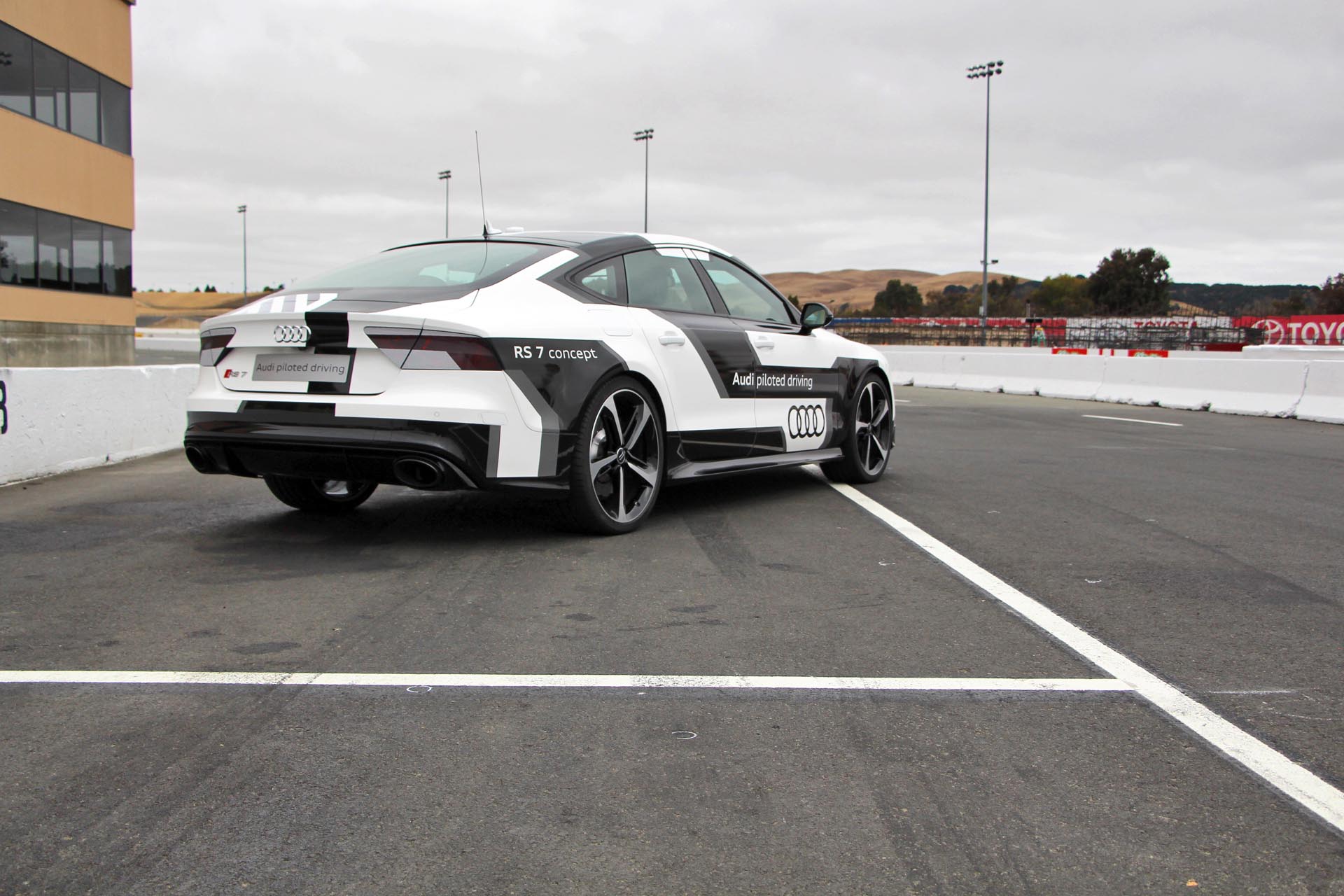
Robby has also been modified so that his weight, when carrying two occupants, will match a standard RS7 with one occupant (a driver). That weight reduction came by way of ripping out rear seats and removing some of Bobby’s redundant systems – a set of stereoscopic cameras, secondary brake booster controls, and some of its, well, brain, which is why it requires an ‘emergency human’ in the driver’s seat. We had the privilege of riding shotgun as Robby did a hot lap around northern California’s Sonoma Raceway with an Audi engineer in the driver’s seat ready to take over in the unlikely event of an anomaly, then driving a standard RS7 on our own to give us a sense of the difficulty level involved.
Basically, I was hopeless, and allowed my excitement to overshadow what limited track driving training I have had, falling seconds behind Robby’s pace by the end of the lap. Robby’s driving style was fairly conservative, too, avoiding the kerbing and treating each corner separately rather than improvising some lines to his advantage, so the more experienced journalists seasoned with a wealth of track experience were able to match and even beat Robby on only their first experience and second lap around this track. Maybe I’ll try again in several years, or just lump me in as an example of an average driver. Another note about Robby is that while delivering an impressively quick lap, he was incredibly smooth on the inputs, pushing the car to its traction limits on some corners, but always braking and accelerating smoothly, unlike many professional drivers with which I’ve ridden, who forgo smoothness for every millisecond of pace they can squeeze out. He was so smooth it was downright eerie.
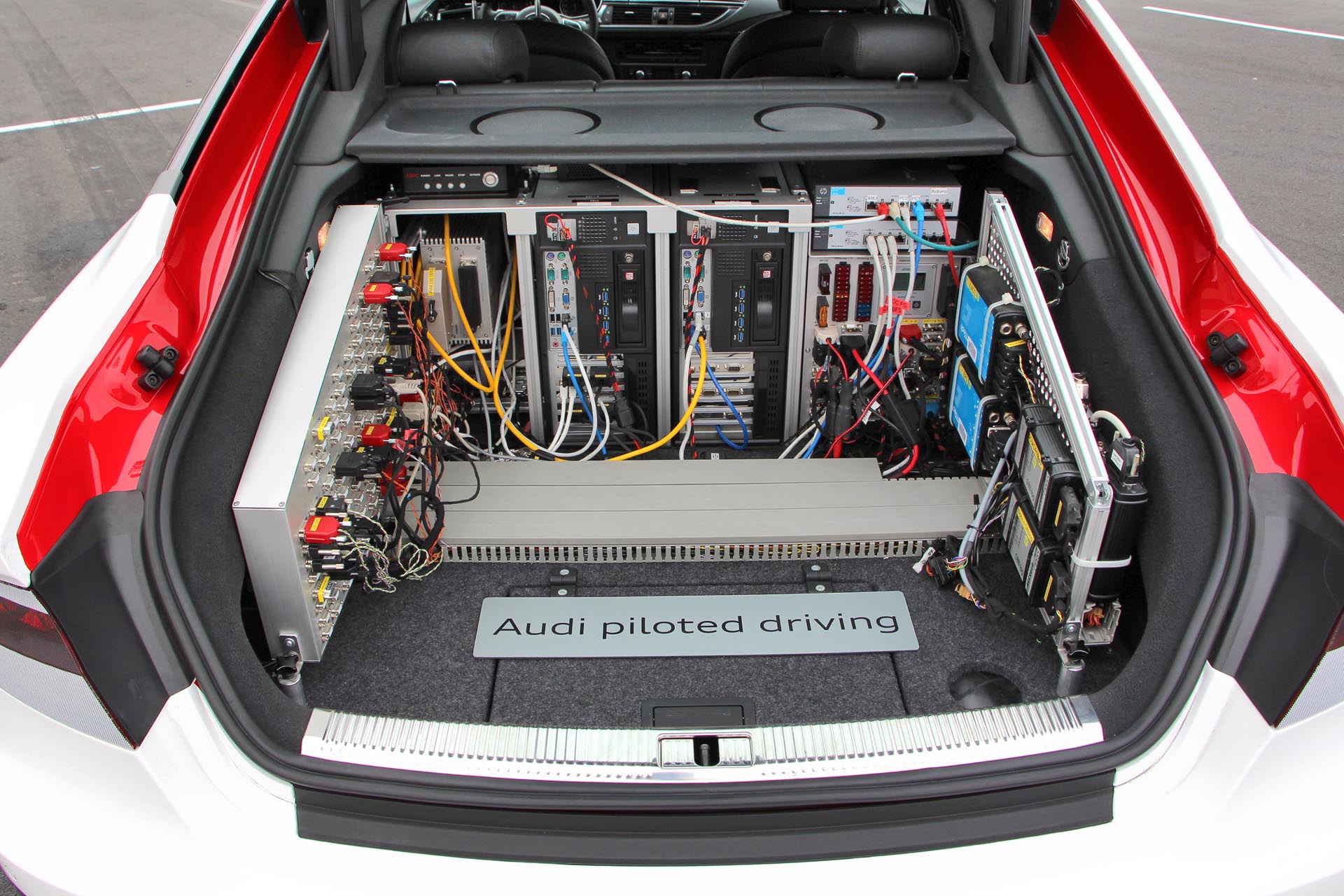
But Robby’s scenario is admittedly of limited application. I mean, what is the point of this track test anyway? In a nutshell, it is simply the precision and response times on display here, a simple track map analysis and driving line determined, then careful inputs by the bits and bytes to show that an autonomous Audi can respond with the immediacy required to drive safely in the city and react with precision to changing conditions, without using pedestrians and other traffic as its beta testers.
While we were not blessed by rain (perhaps that was why the event was held in an area of California that has not seen significant rainfall in years…), Robby and Bobby have been tested in rain, and can complete the same circuits, albeit more slowly as ESP and the Quattro AWD system sensors react to reduced traction. However, Neither Bobby nor Robby can reconfigure their ‘racing line’ to suit conditions such as rain or other factors, an evolution that will be necessary to study and perfect for driver safety functions like obstacle avoidance steering and braking.
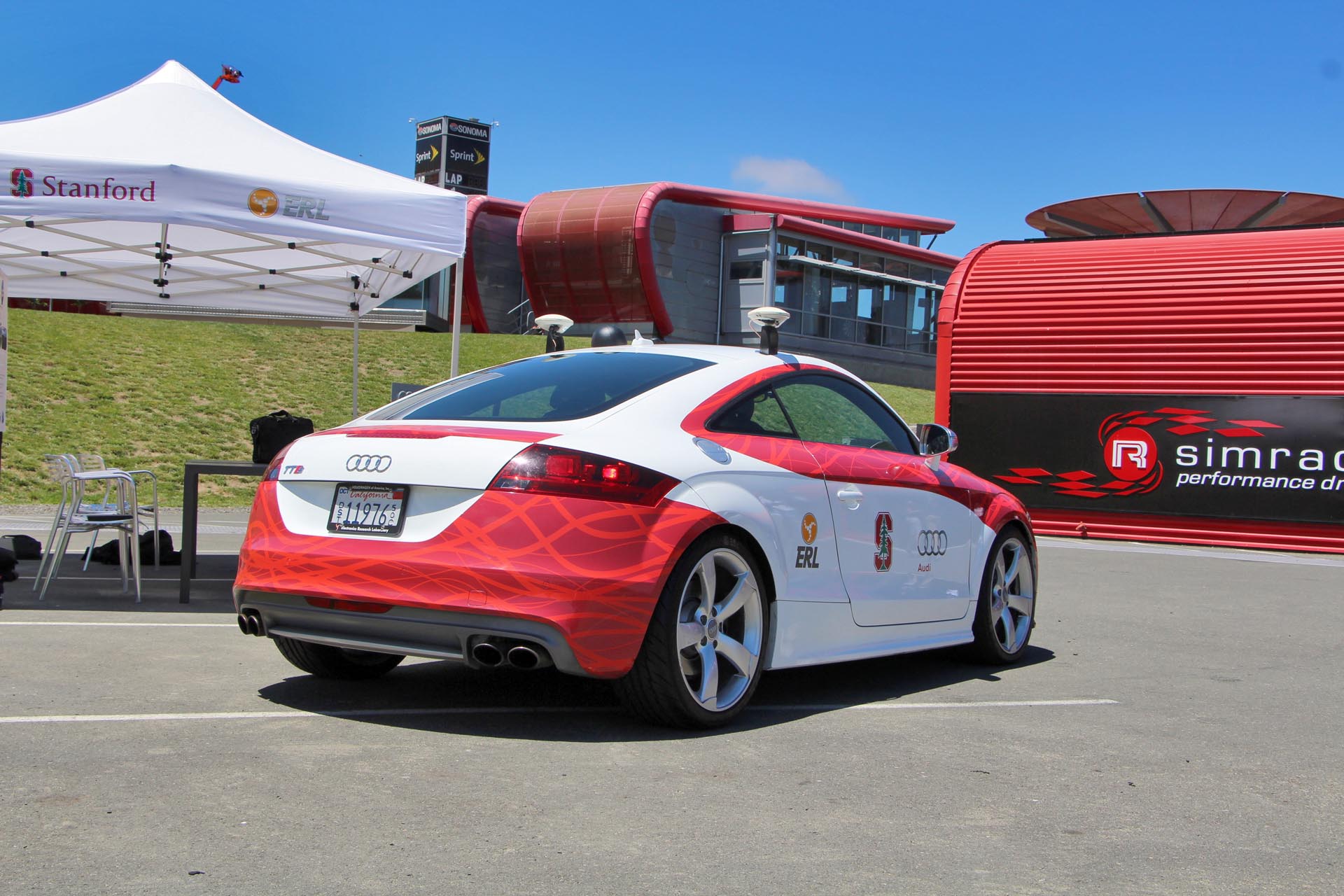
However, Audi also brought along Robby and Bobby’s cousins. Shelley and Jack. Shelley is a precursor to Bobby and Robby, an Audi “Piloted Driving” experiment and collaboration with Stanford University first displayed at Bonneville speed week in 2009, then Pikes Peak in 2010. Shelley, an Audi TT, continues on as Stanford’s guinea pig in the automated driving research, with both machine intelligence and human physiological response to automated driving.
Some of that research has helped refine Jack, an Audi A7 whose programmers studied trained limo drivers instead of race car drivers for a change, to give its driving behaviour greater refinement rather than a focus on outright speed. Jack is likely the piloted driving test-bed closest and most relevant to production reality. Jack was designed with semi-autonomous driving capabilities for highway driving, and had a taste of real-world driving from Audi’s research laboratory in Belmont, California to Las Vegas, Nevada for the 2015 Consumer Electronics Show (CES) to demonstrate its ‘Highway Pilot’ skills in real-world situations. While it can cruise along and maintain pace, and even pull out and pass slower traffic, it is only functional at highway speeds in fairly average traffic. It cannot find a gas station and pull up to a pump at a service station, fill you up and then set back out on its way while you take a nap. Pfft.
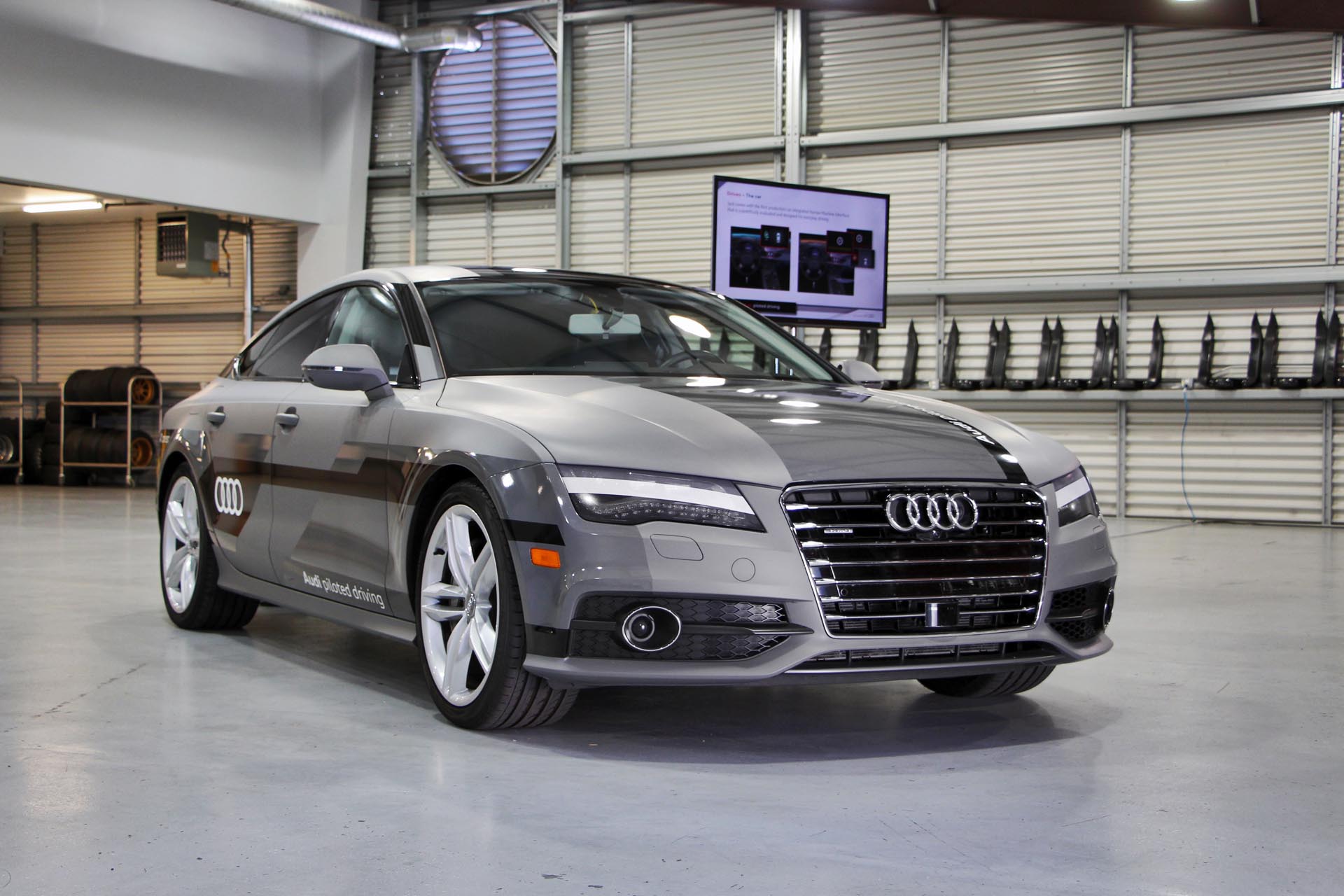
In 2013, Audi demonstrated an A7 that could park and exit parking facilities on its own, another highly desirable driving assistance that only the very few are eager to conduct on their own.
These demonstrators use the full array of the sensors installed on Audi’s latest products, from radar and LIDAR to cameras and GPS, and the innovations developed for these cars are the new equipment being stress-tested for the next generation of production cars.
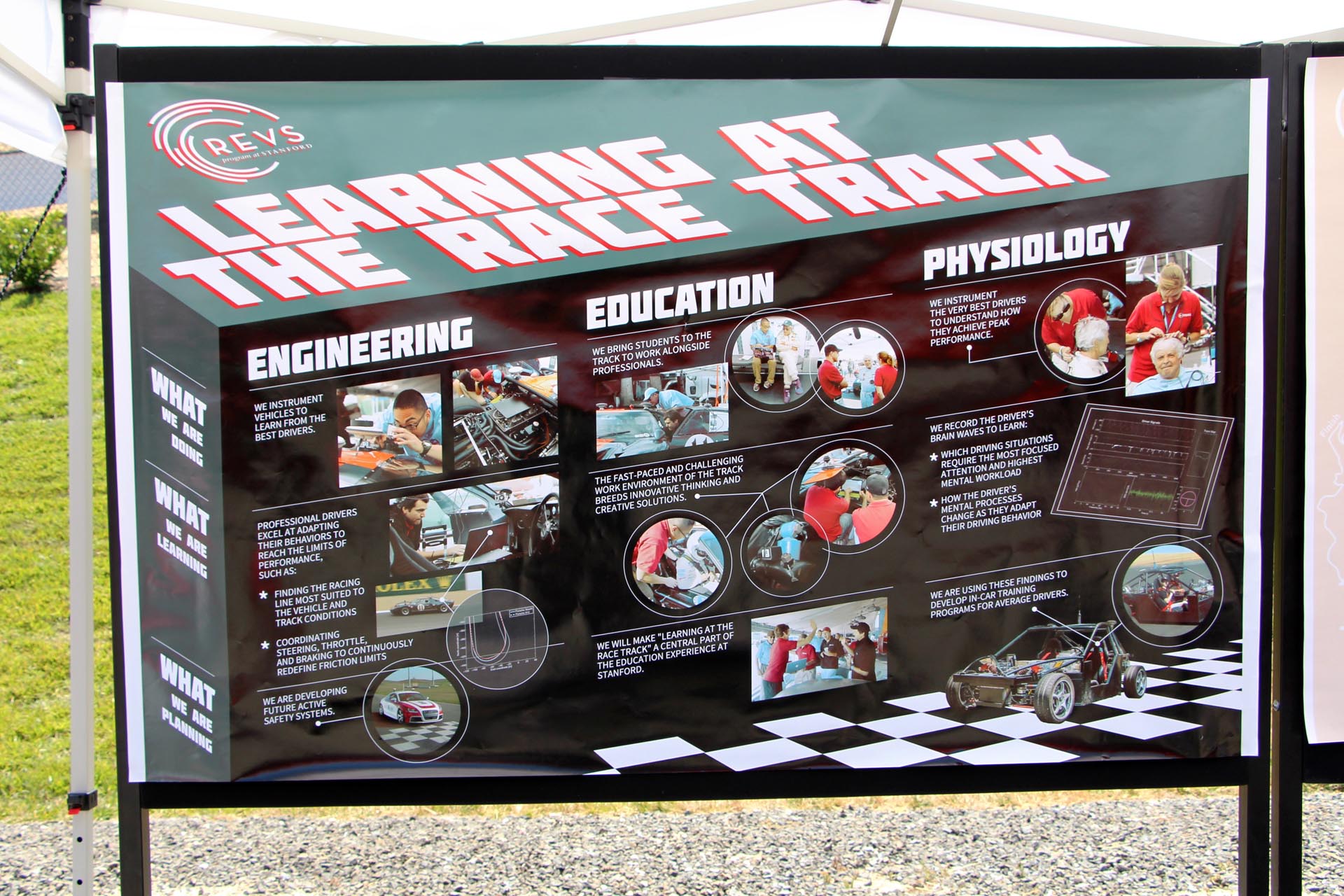
Audi’s current adaptive cruise control, it should be noted, is available even in its smallest car, the A3, and can keep pace with slow-moving traffic, right down to a stand still. However, one reaching a standstill, the system relies on its human before resuming with traffic, while the next generation “Traffic Jam Pilot” will resume with traffic no matter the stoppage interval.
These ‘components’ of autonomous driving are the building blocks towards more comprehensive autonomous vehicles, and help manufacturers tackle the regulatory hurdles that must be overcome before these features are available to the public. Indeed, ‘Parking Garage Pilot’ and ‘Highway Pilot’ are on the radar, but first we will see Traffic Jam Pilot (fully autonomous braking and in-lane steering in stop-and-go traffic, without lane-changing or passing capability) and Parking Pilot (self-parking in parallel or perpendicular spots) in the next-generation A8 previewed by Audi’s Prologue Concepts.
